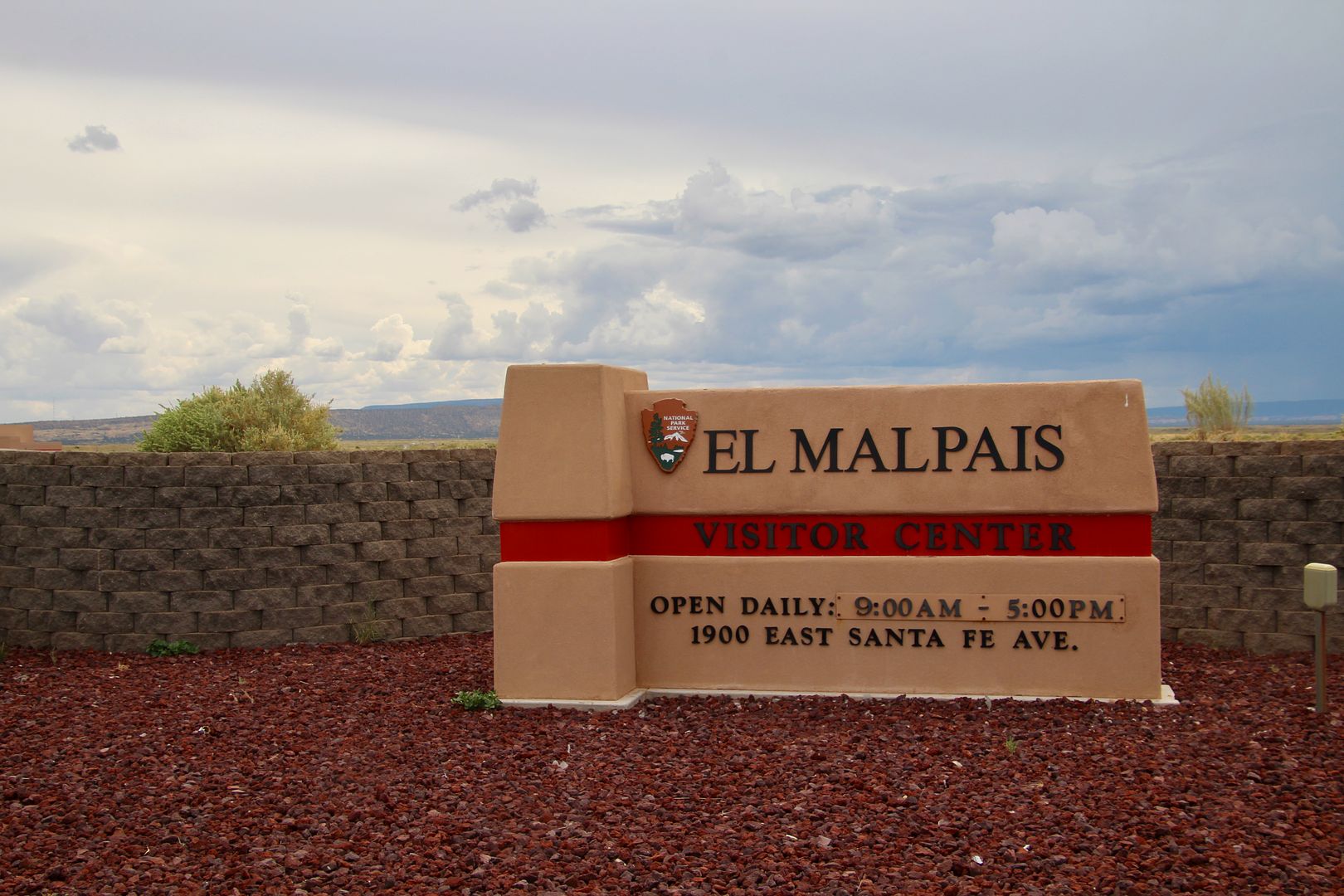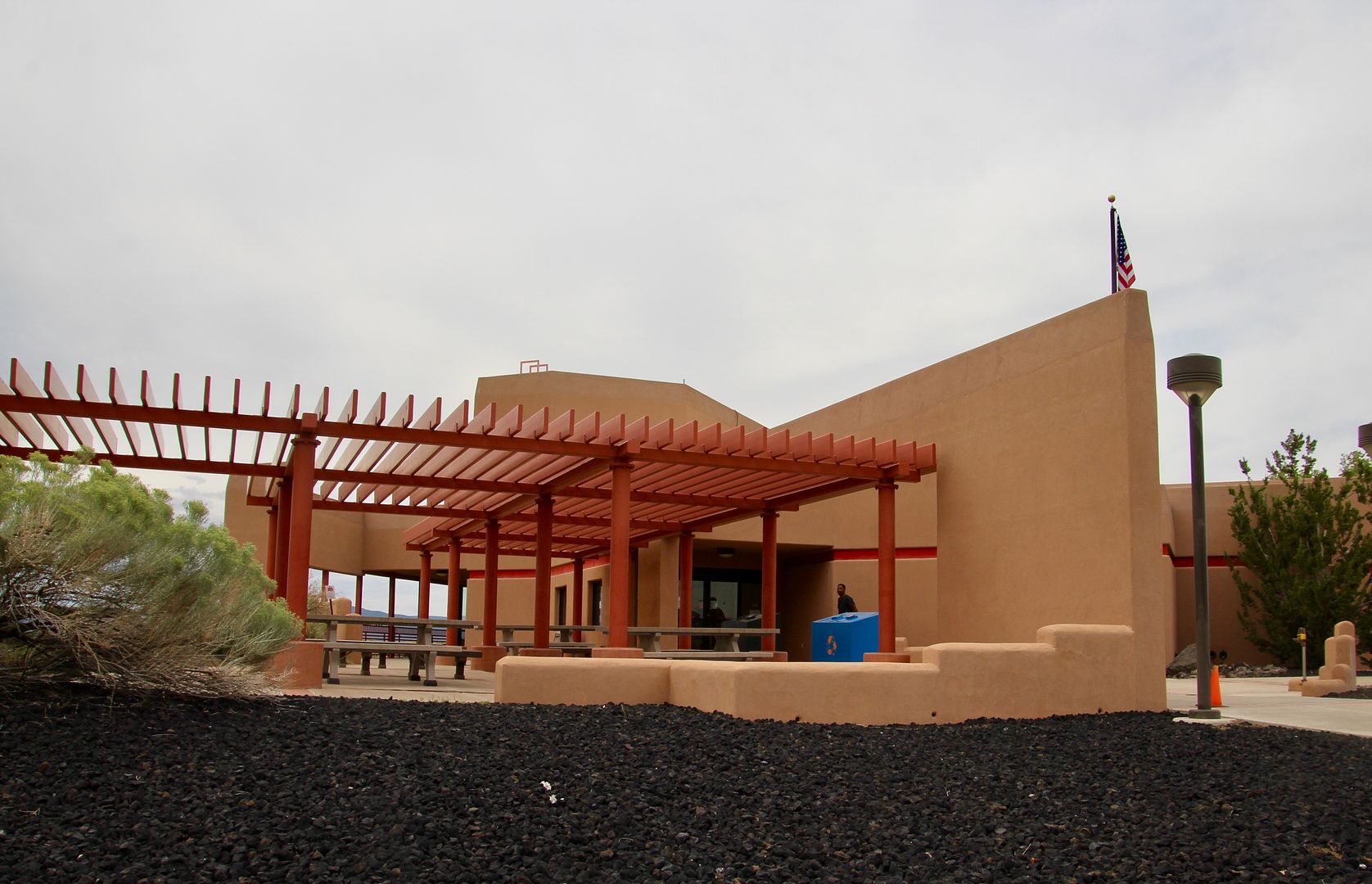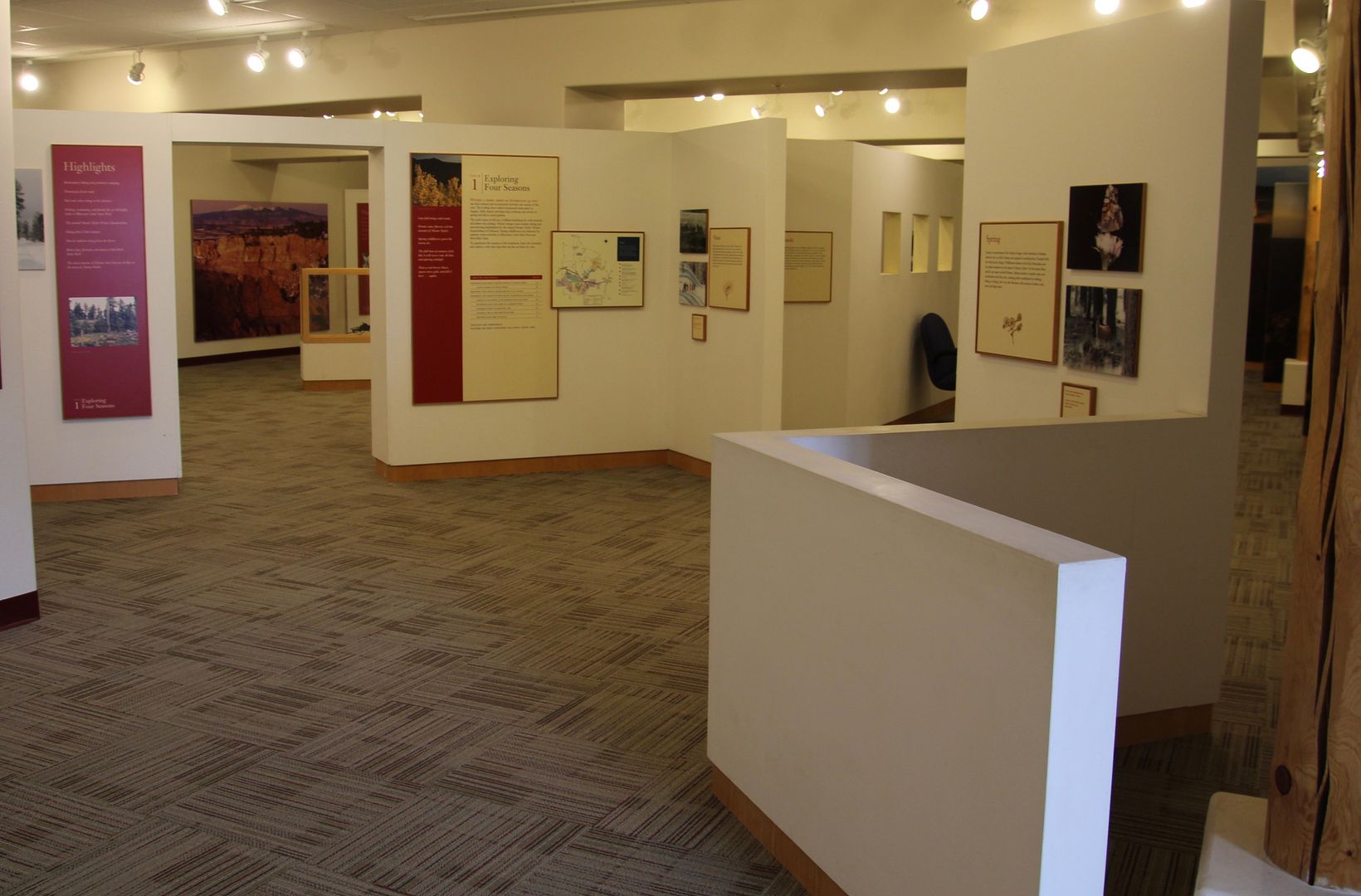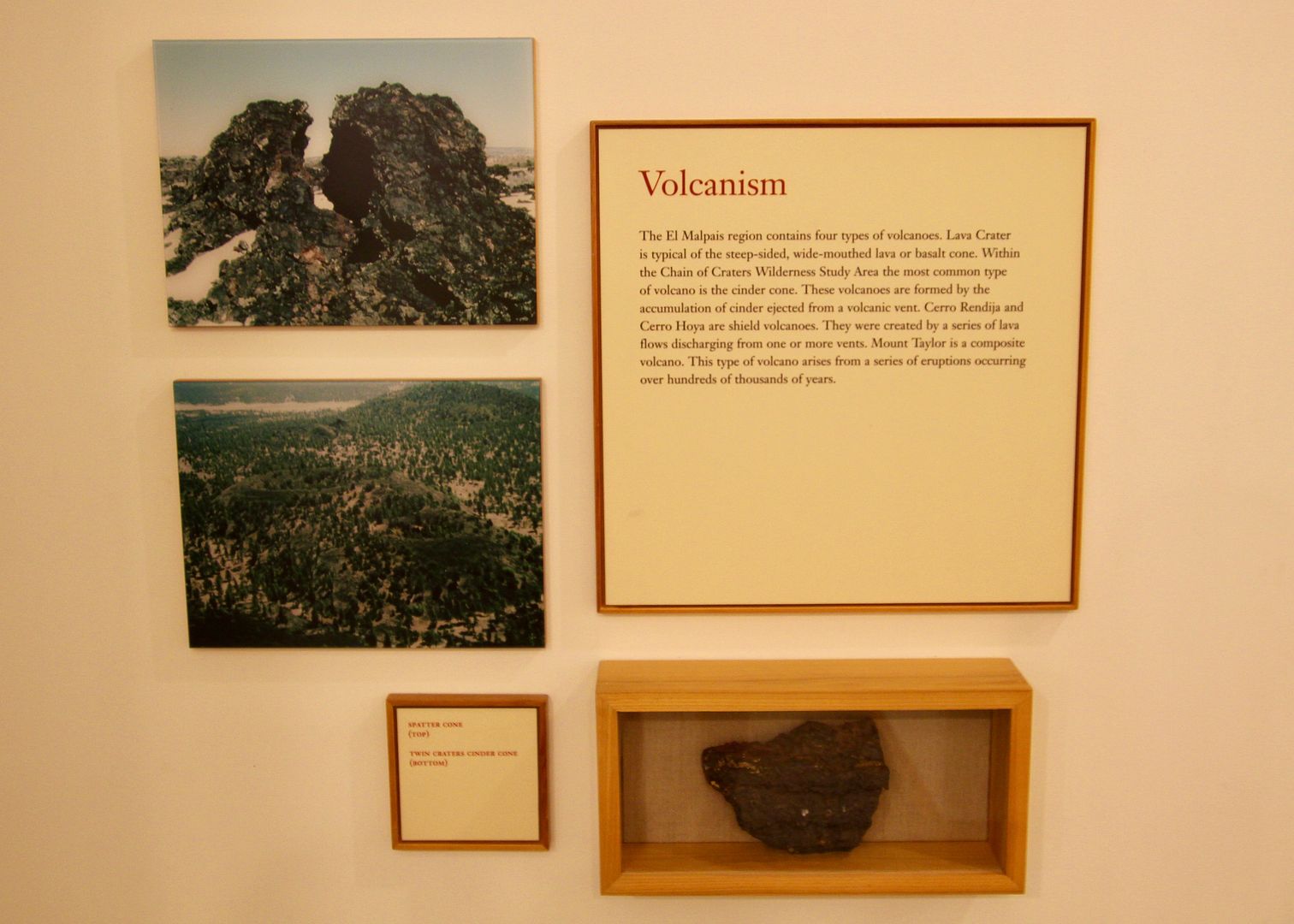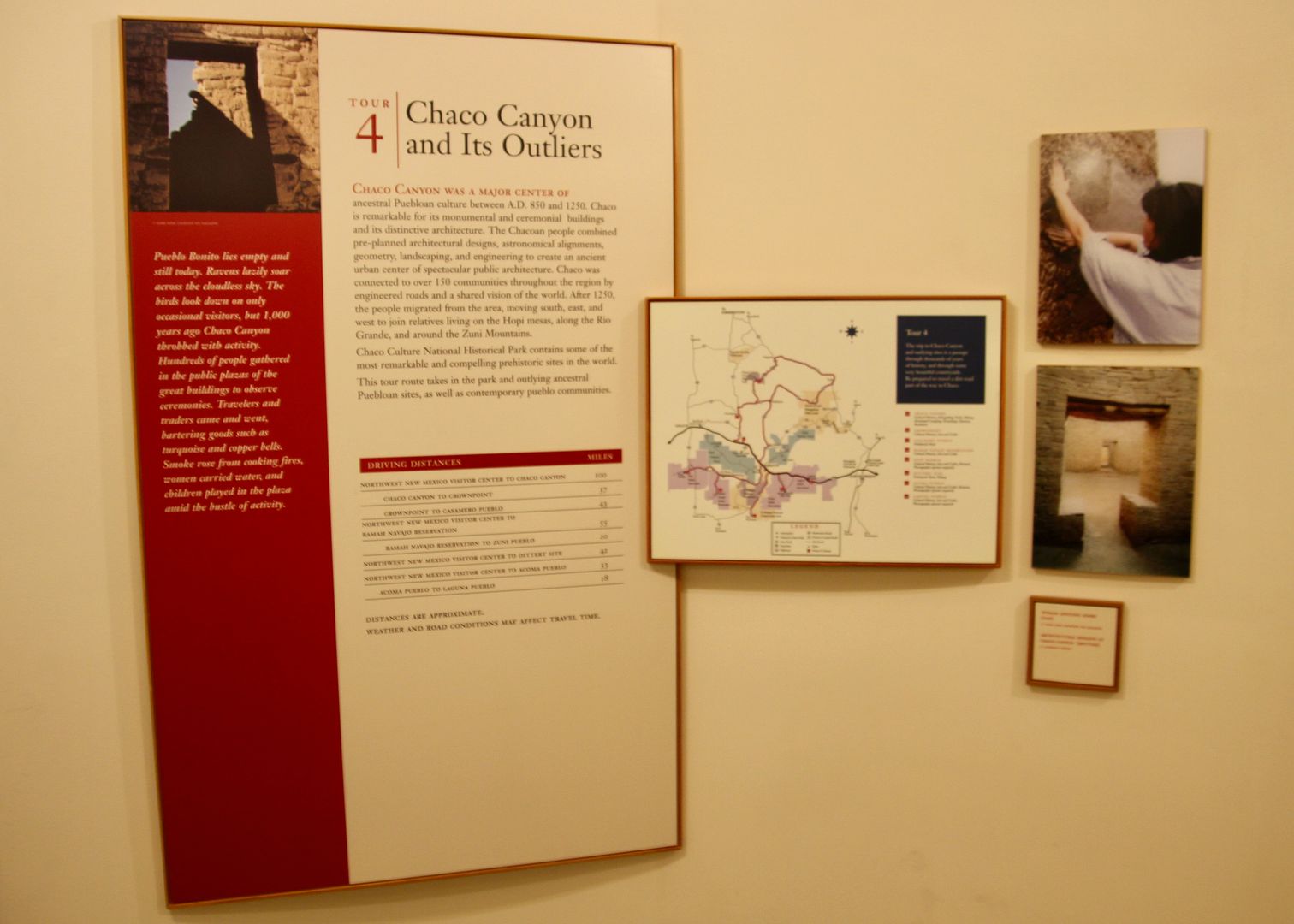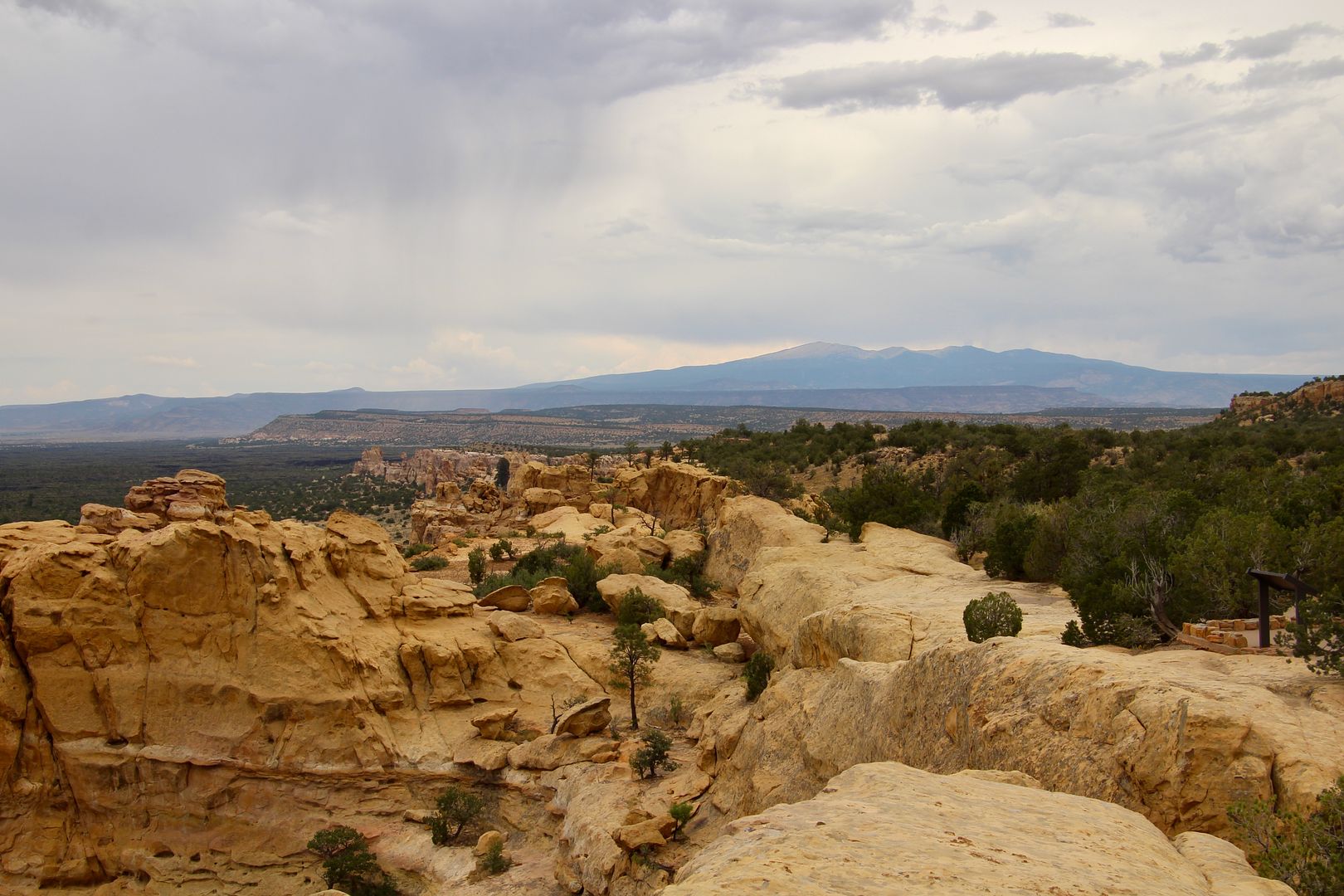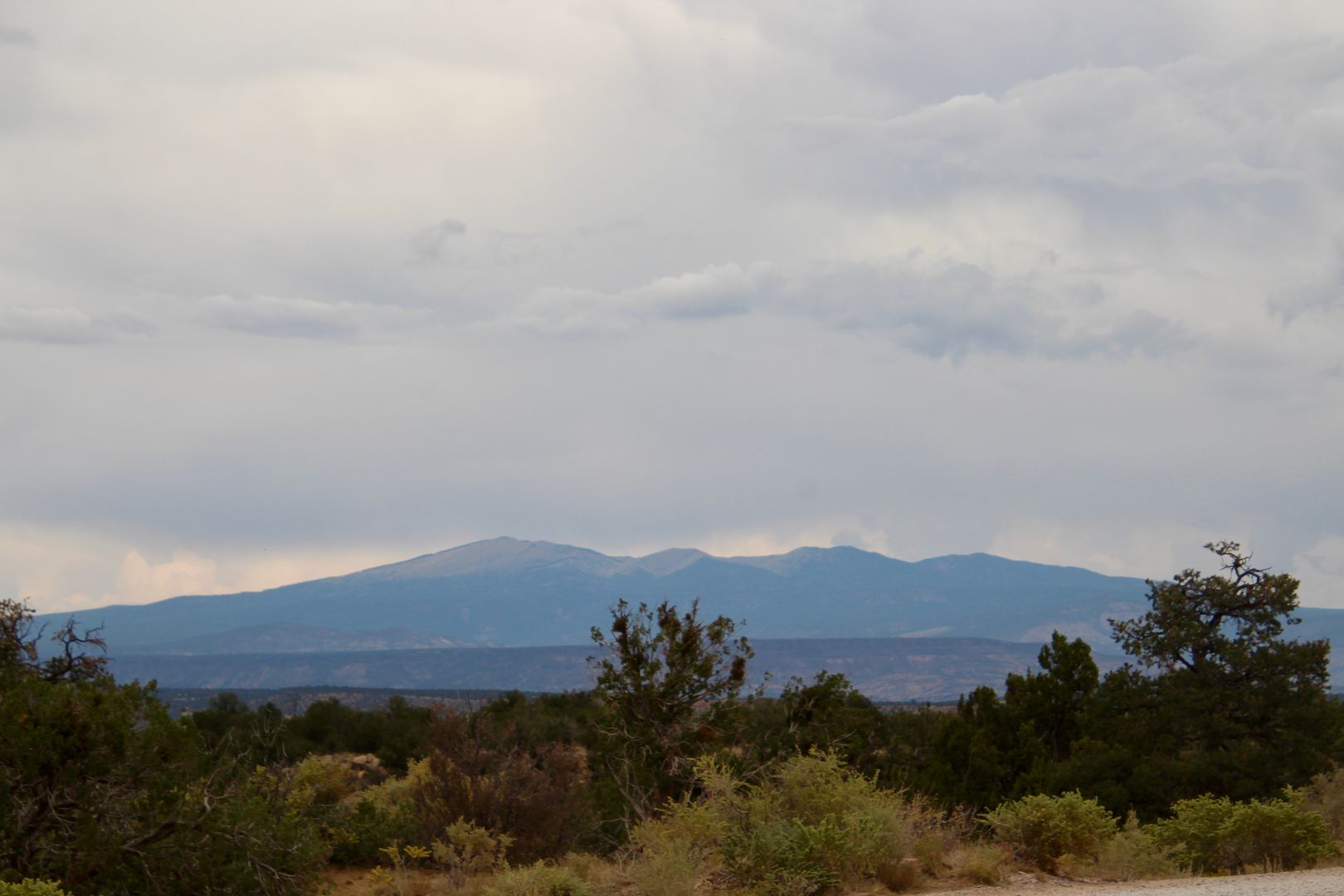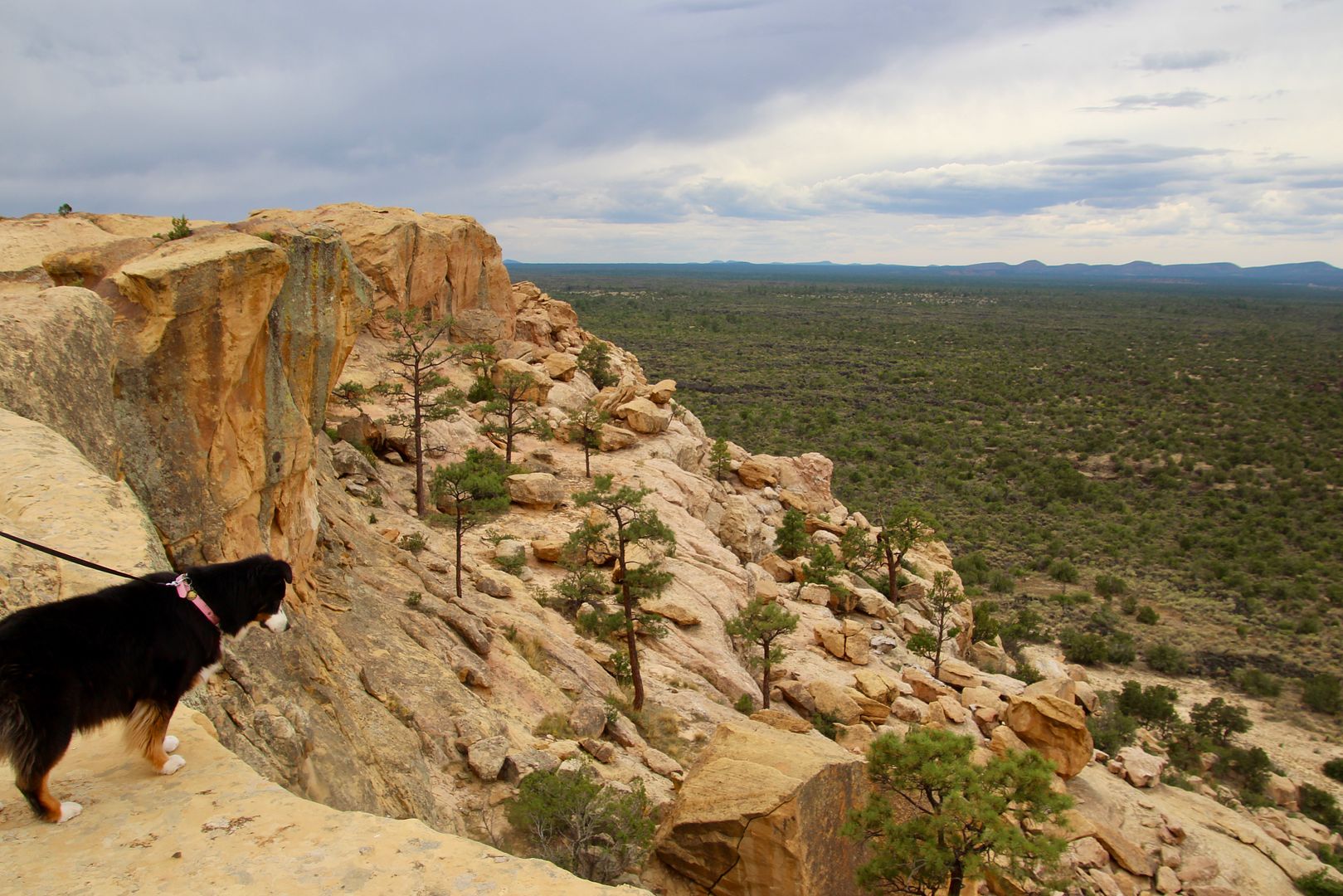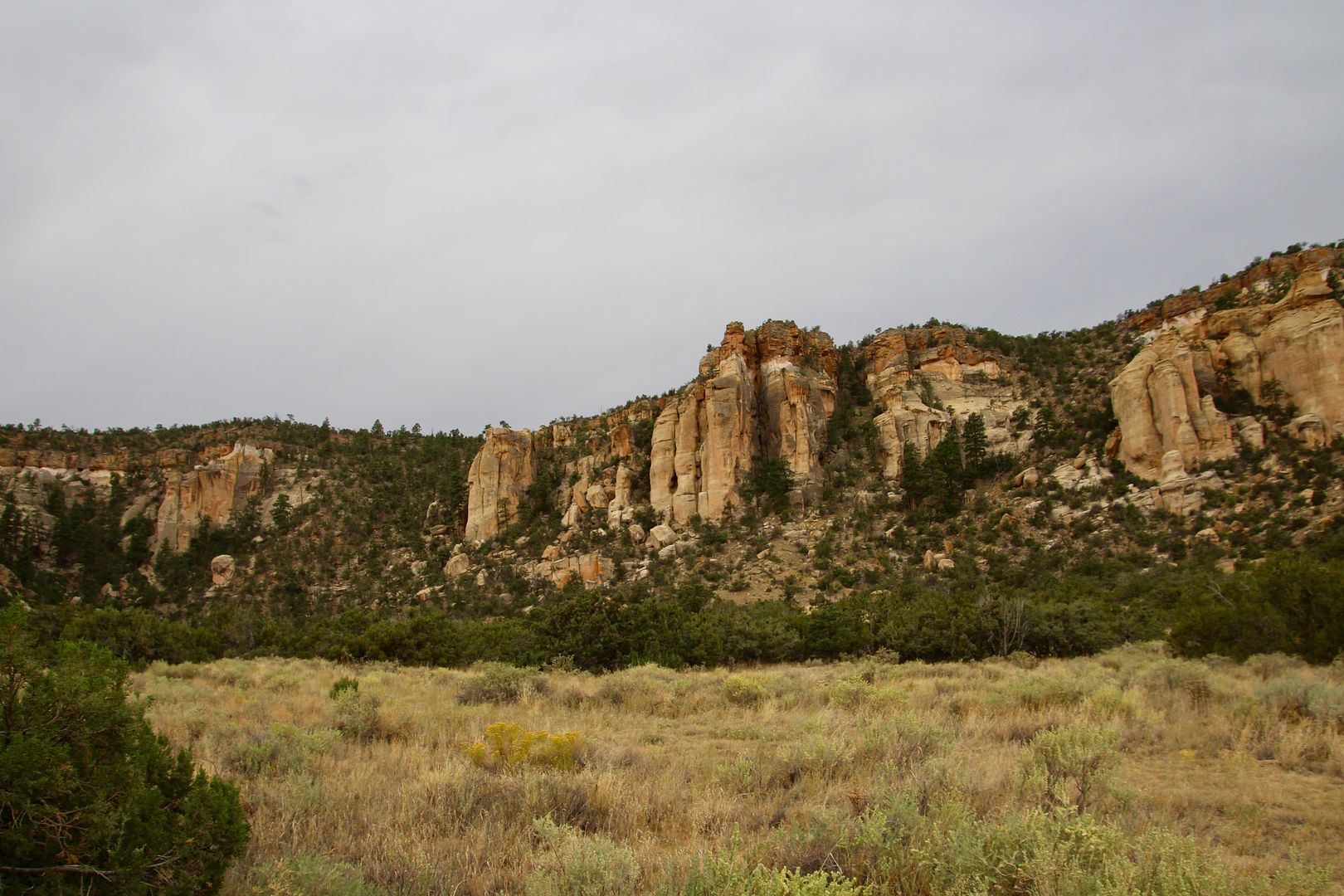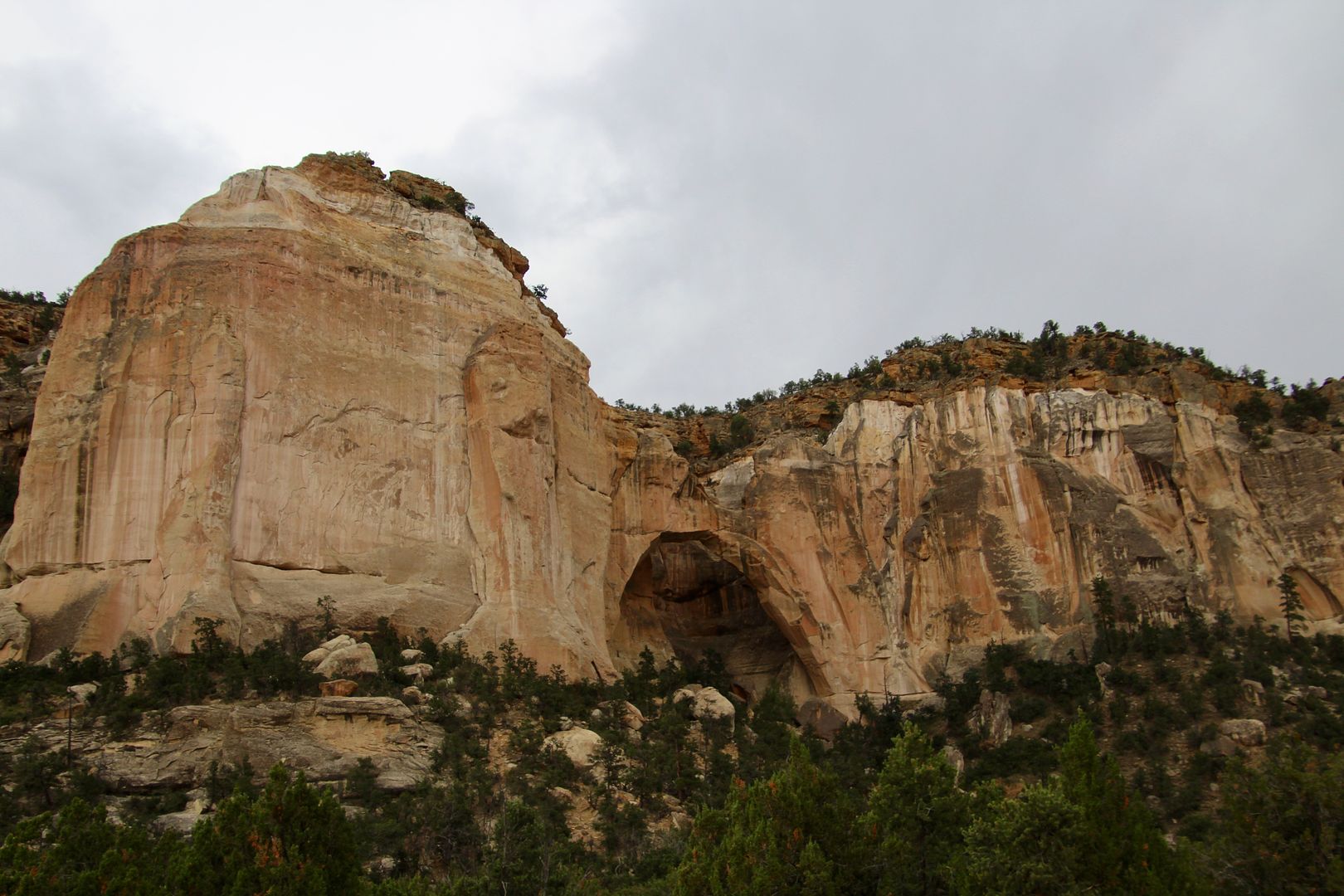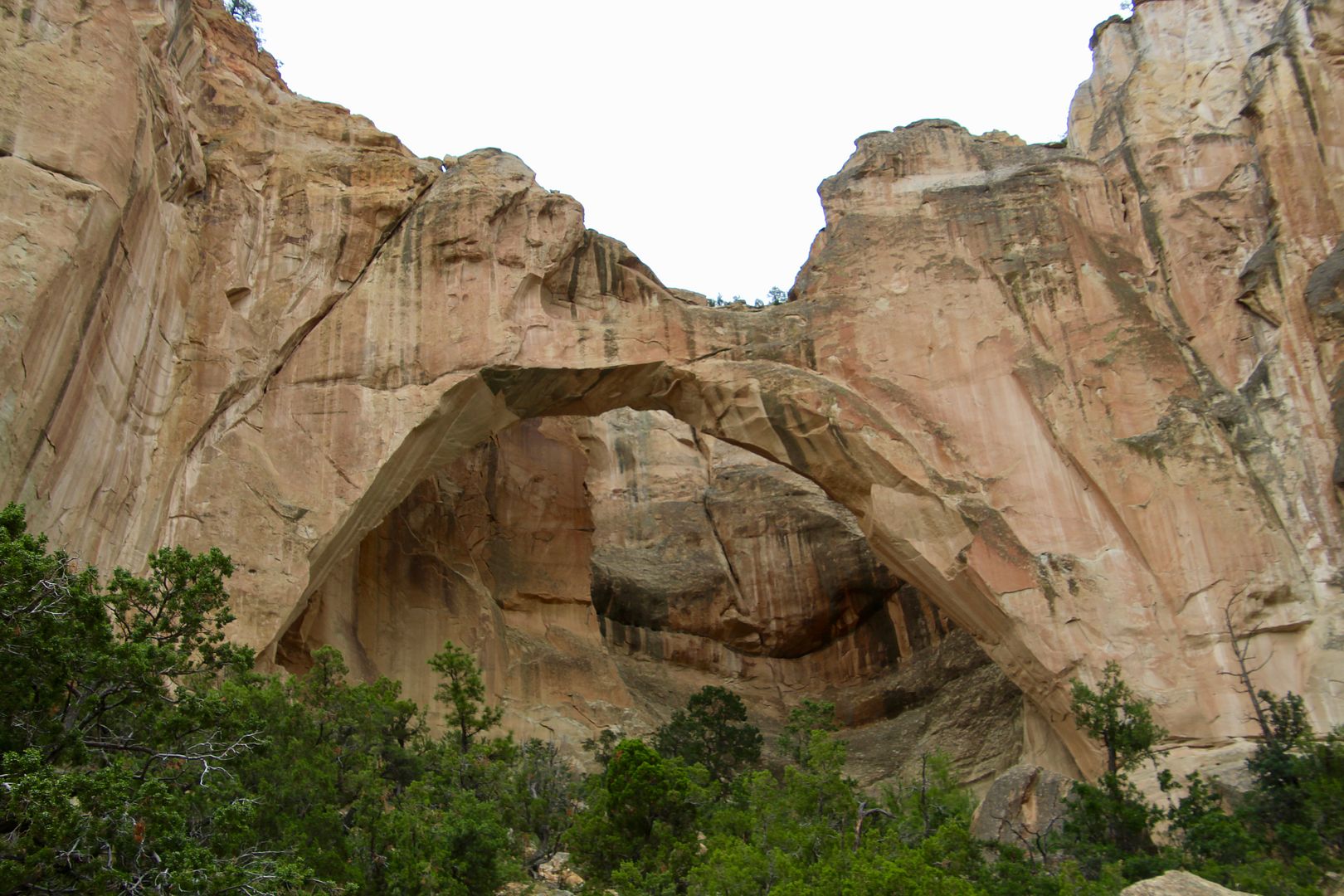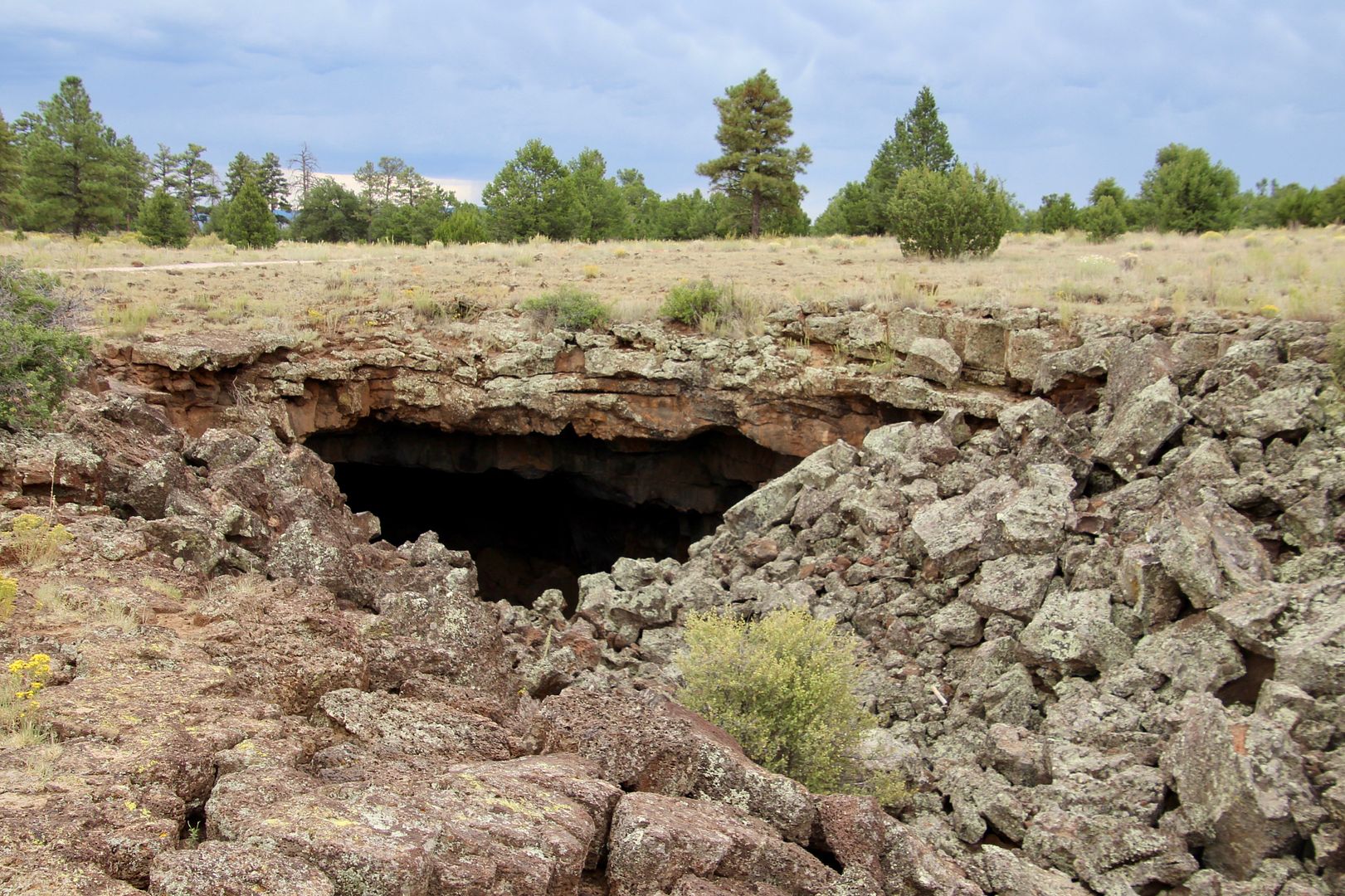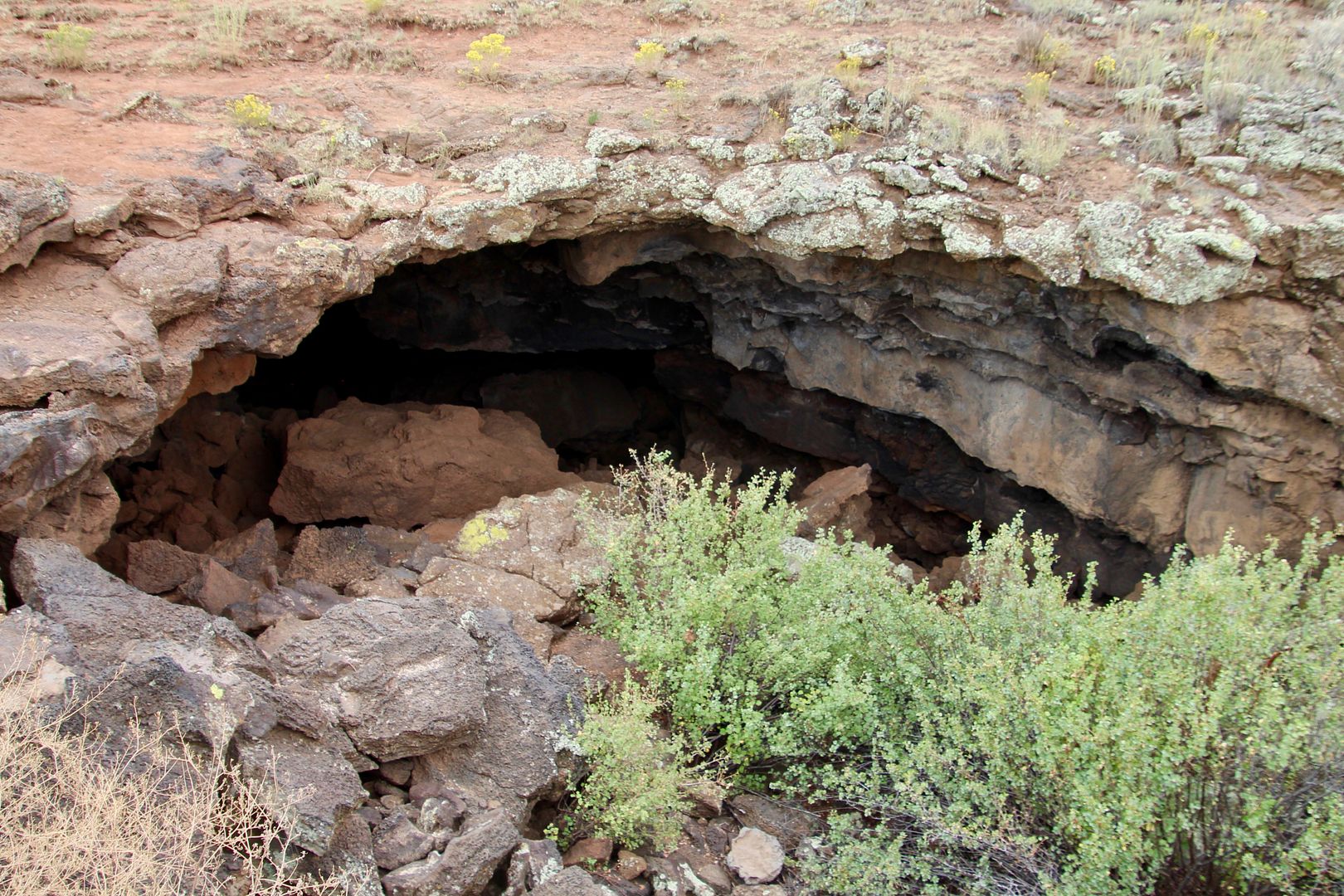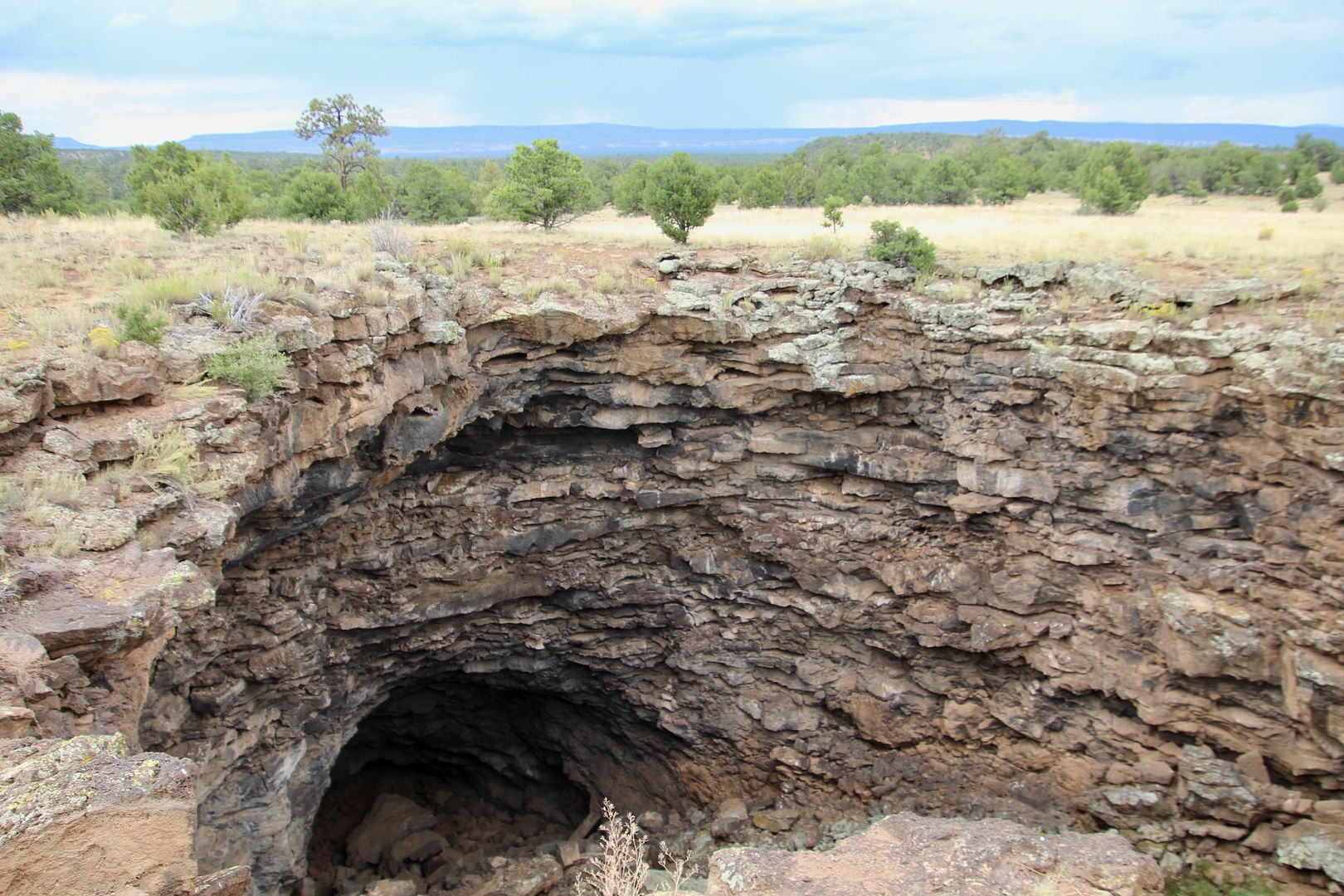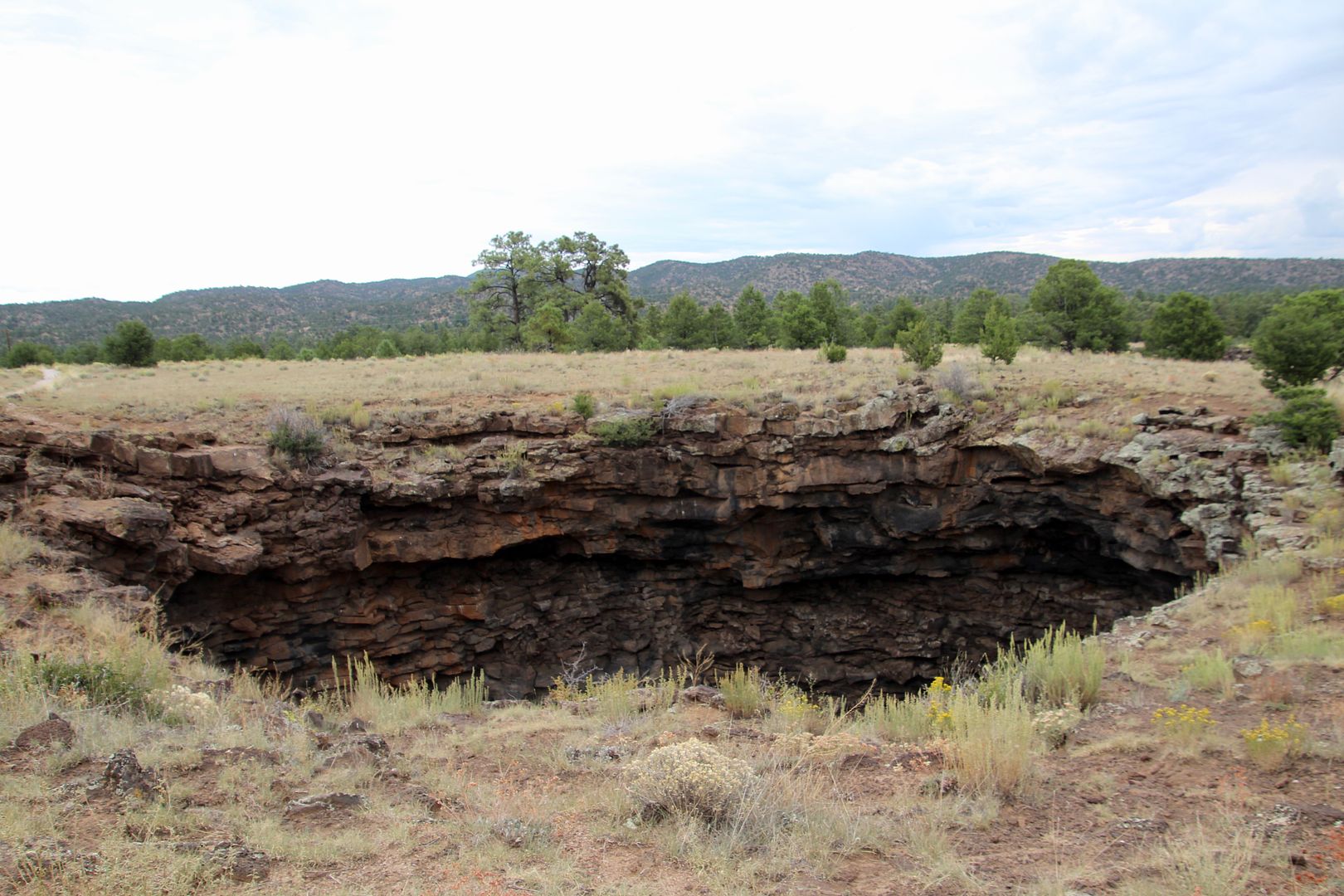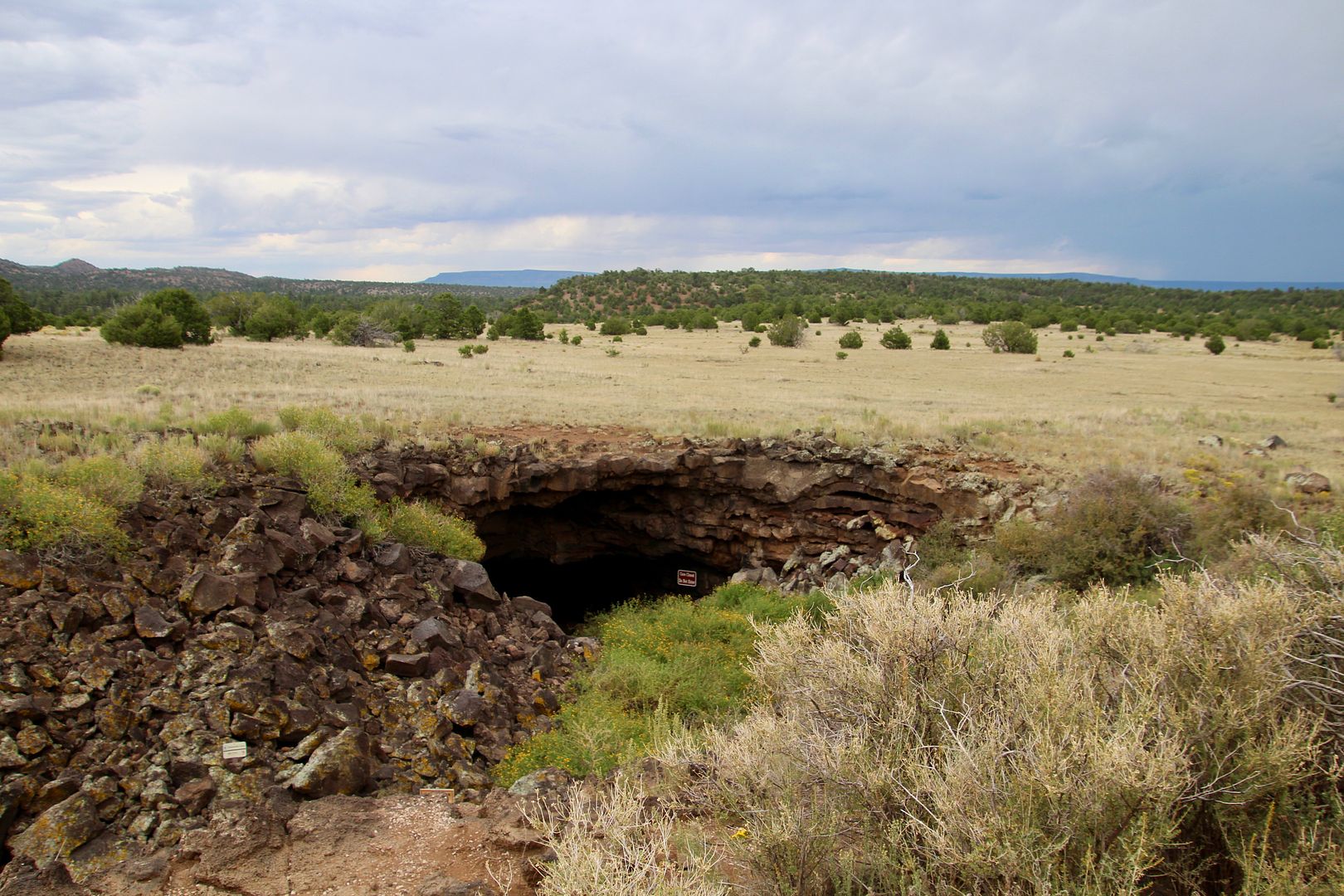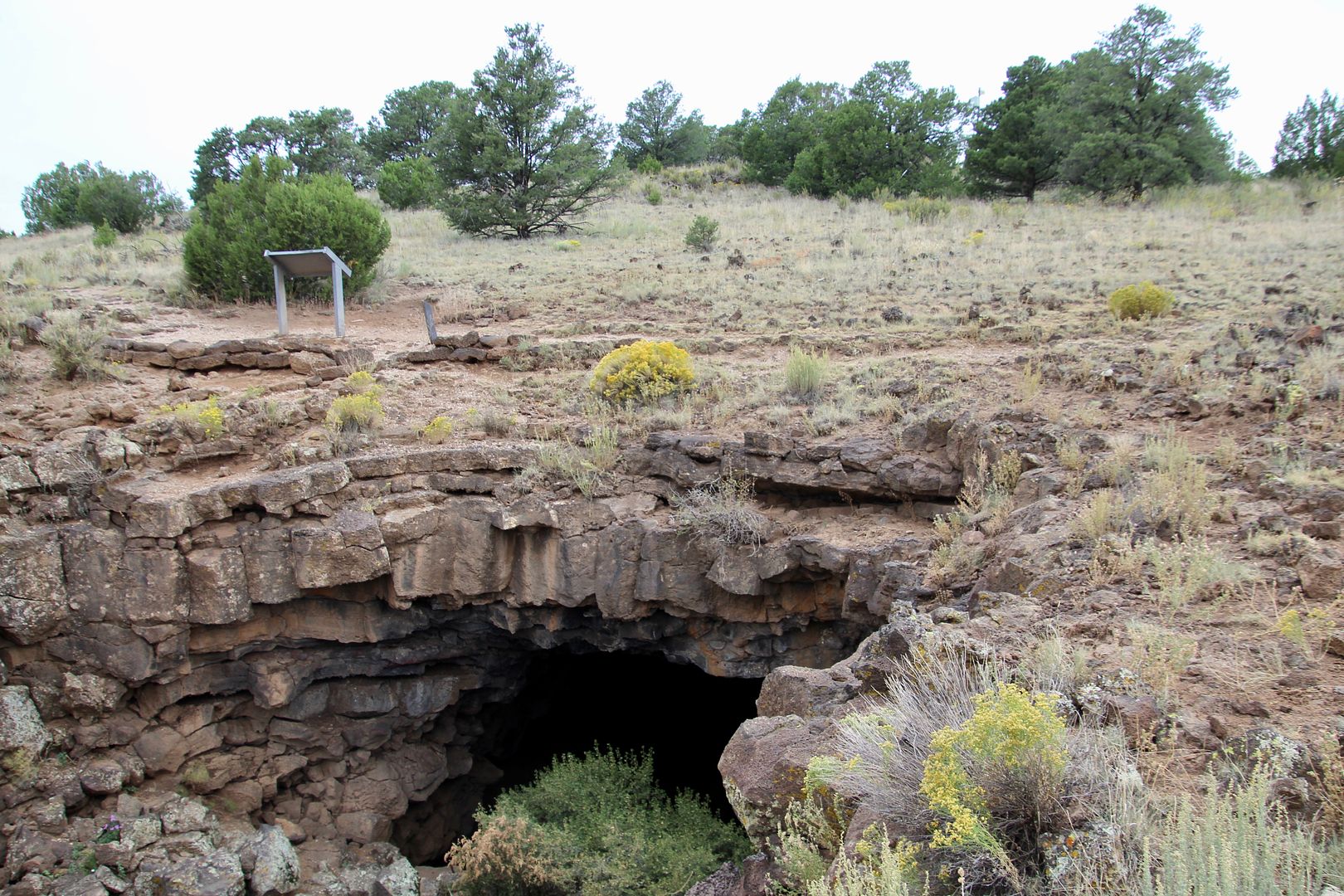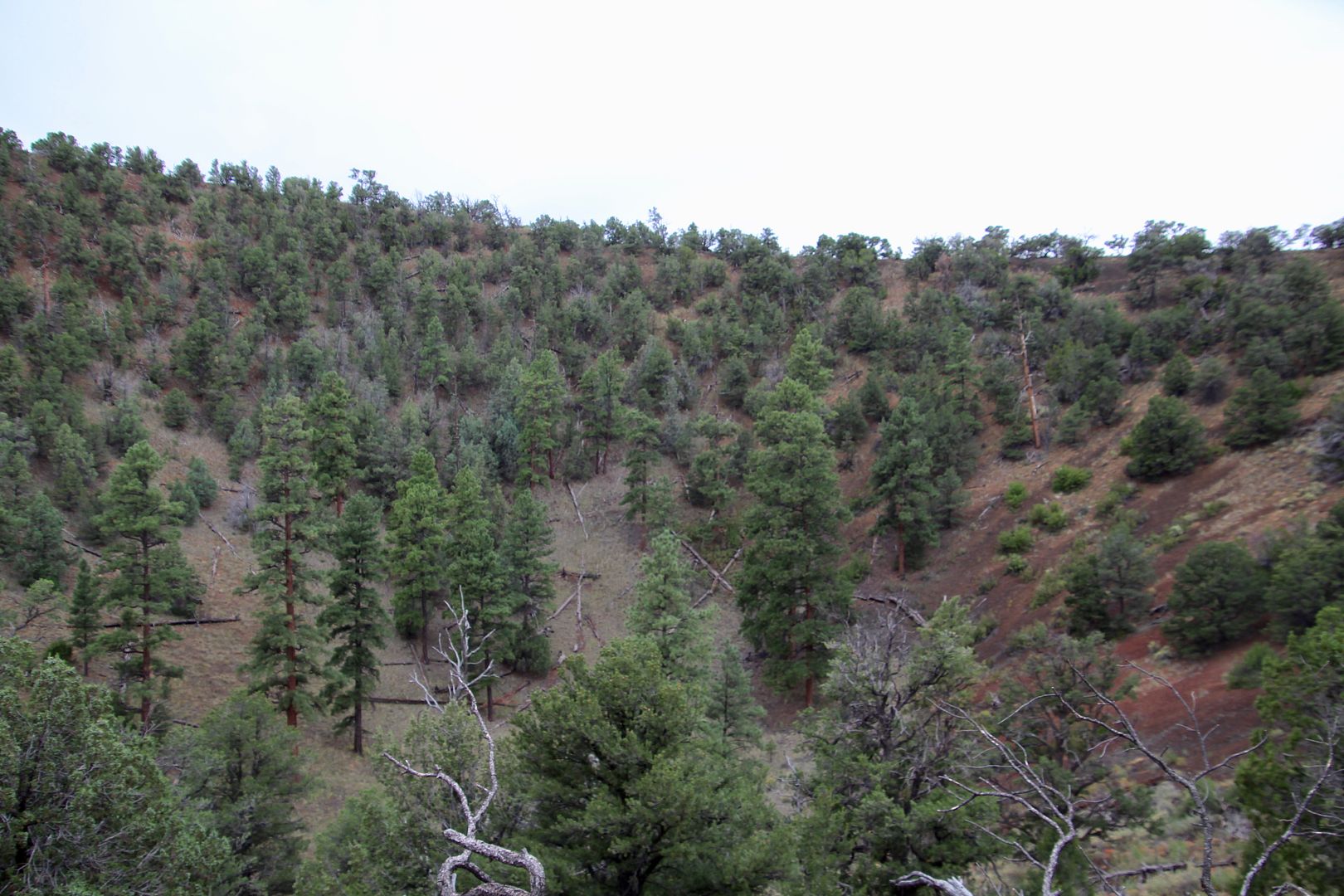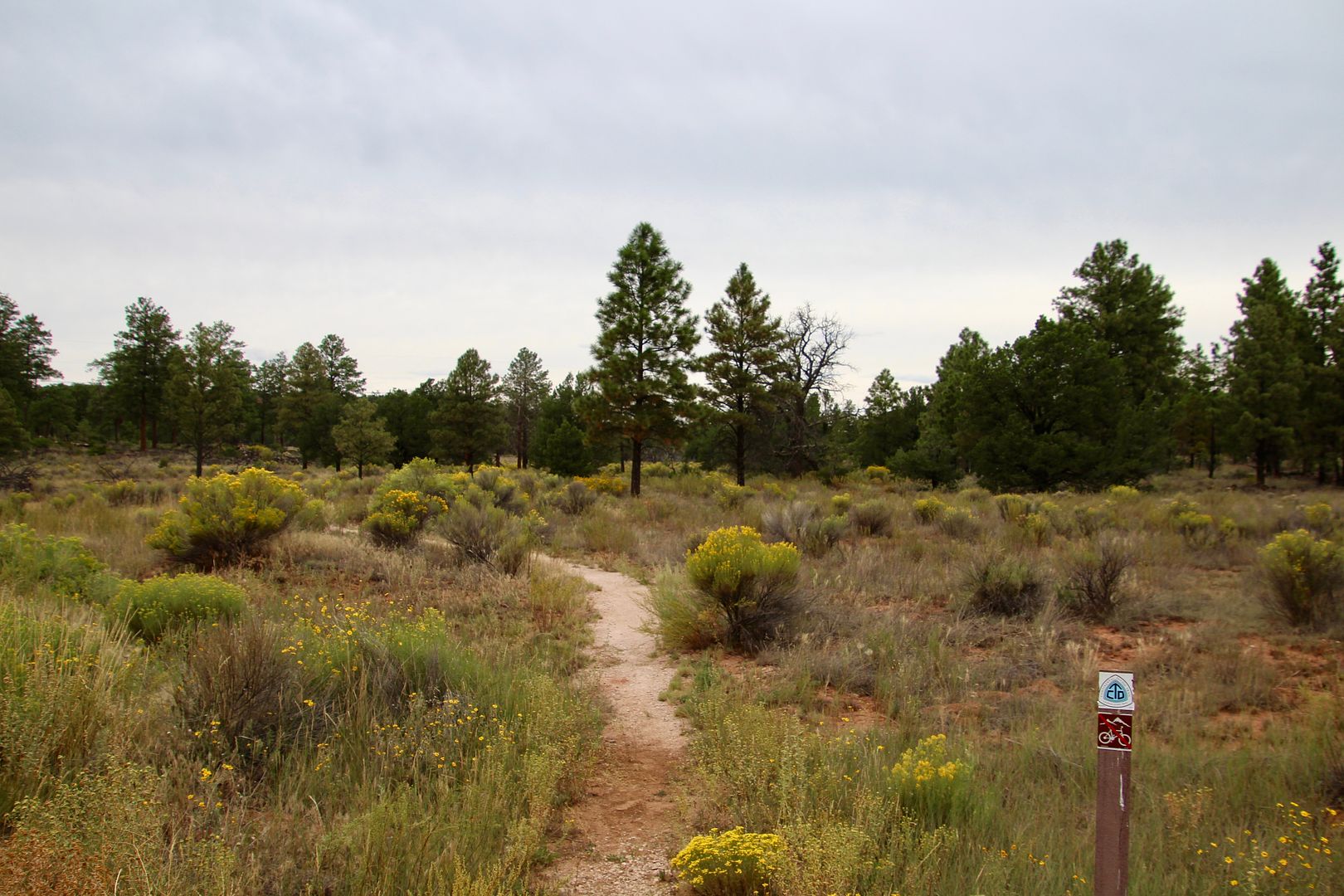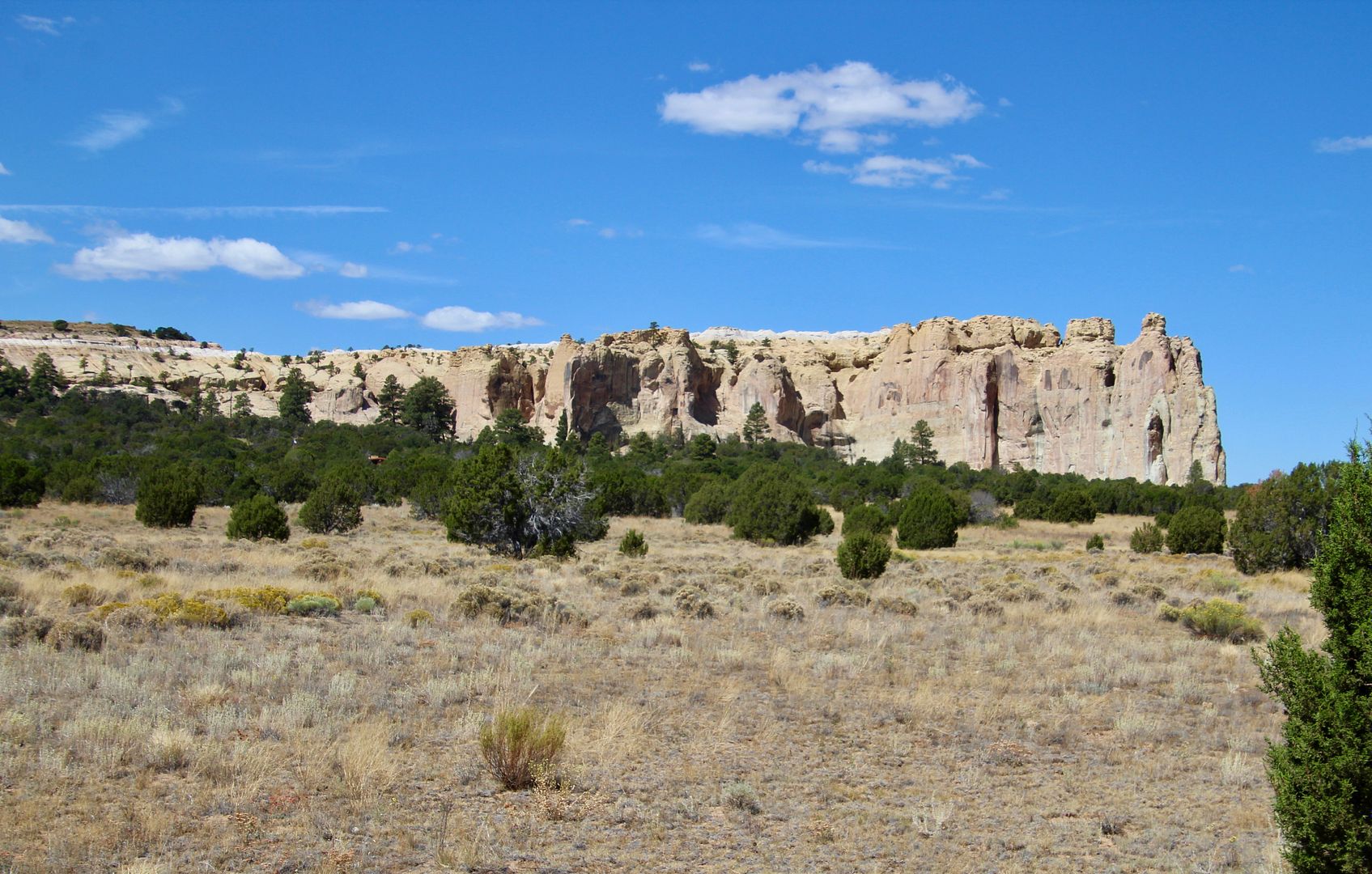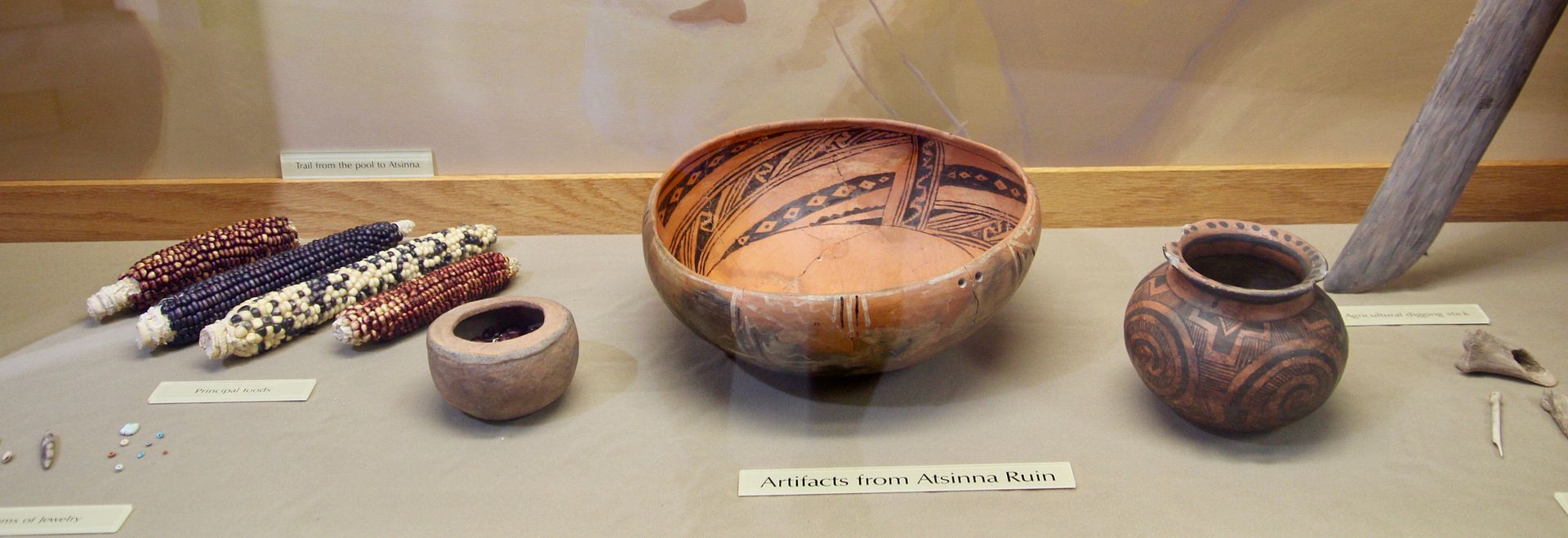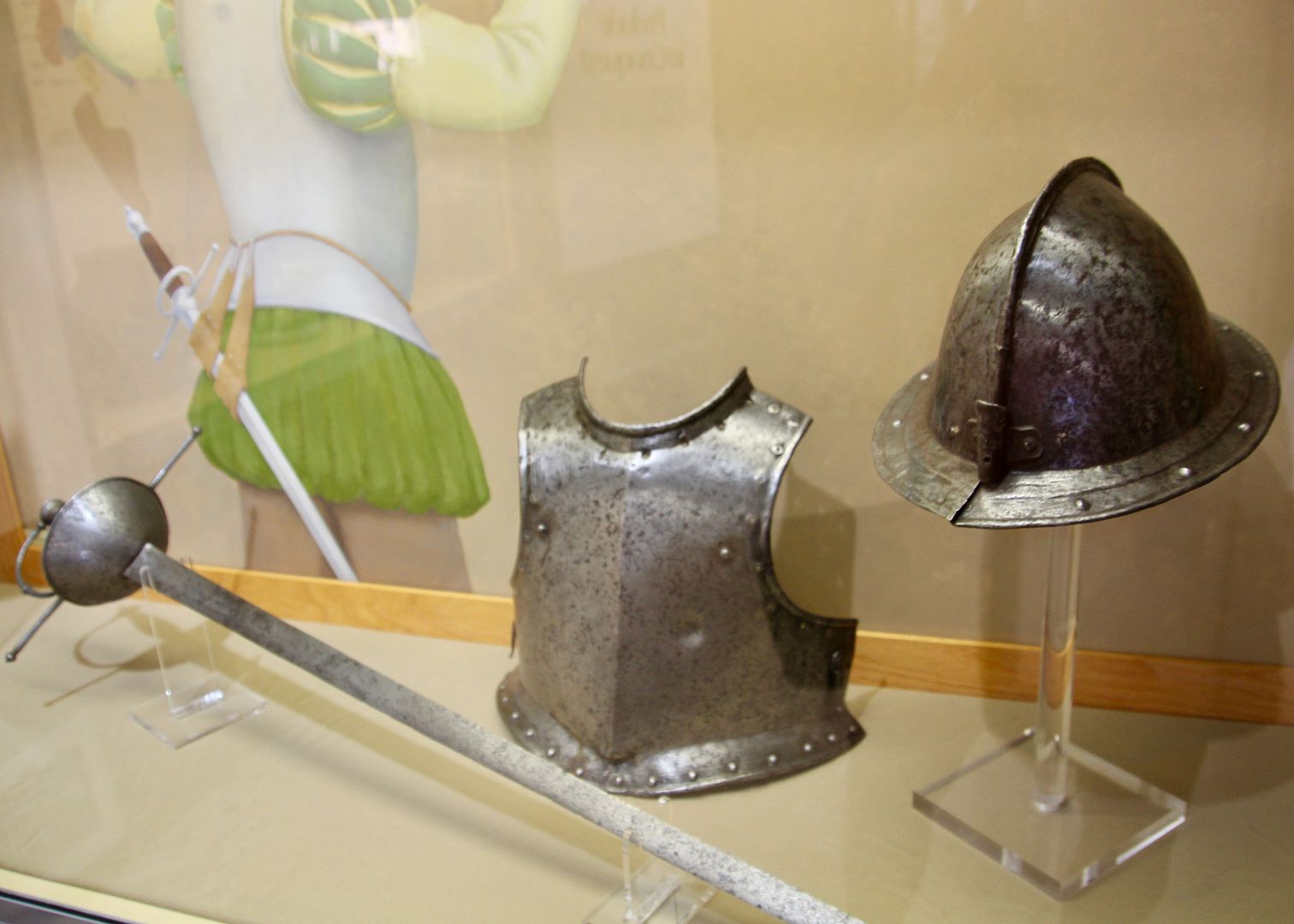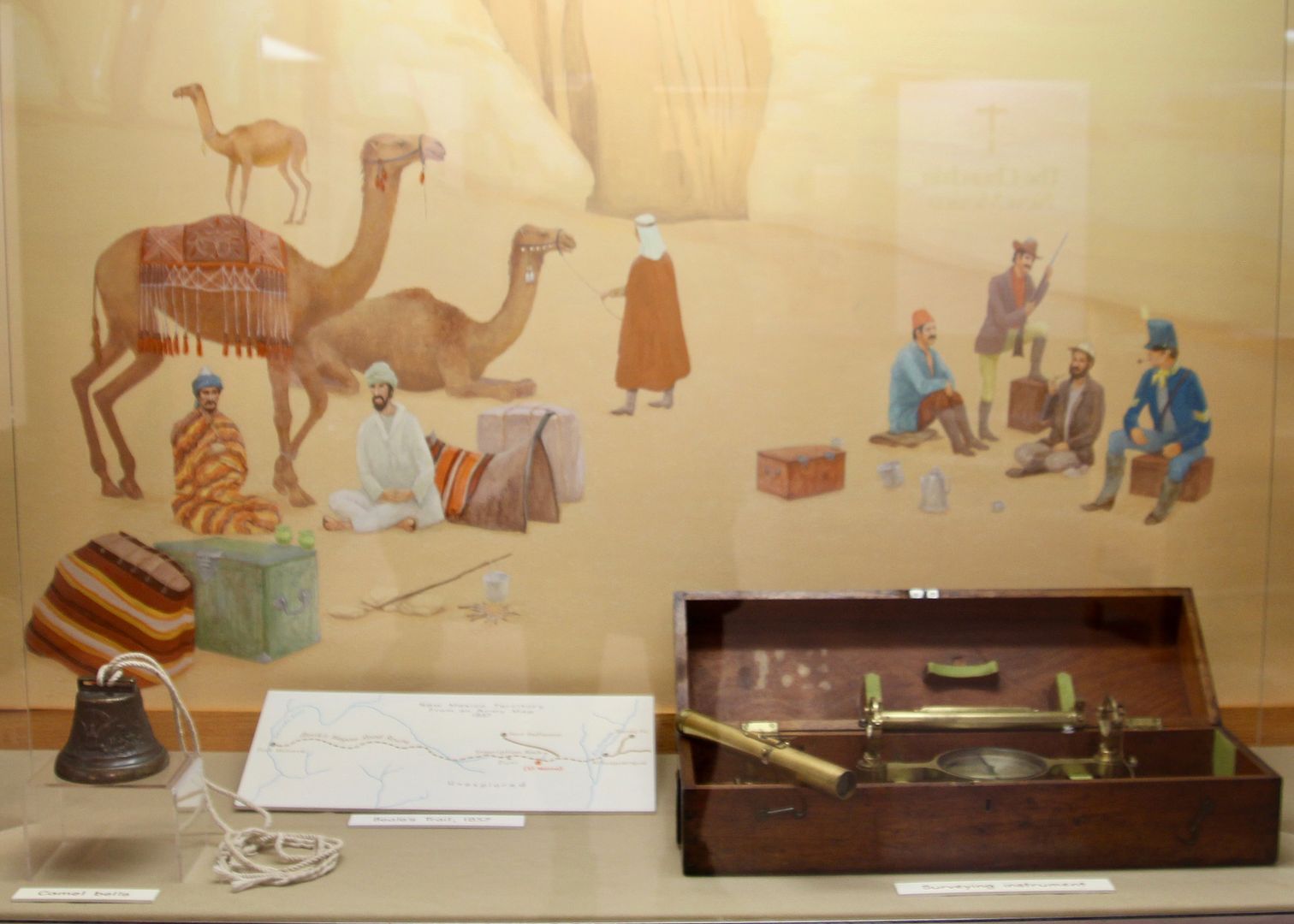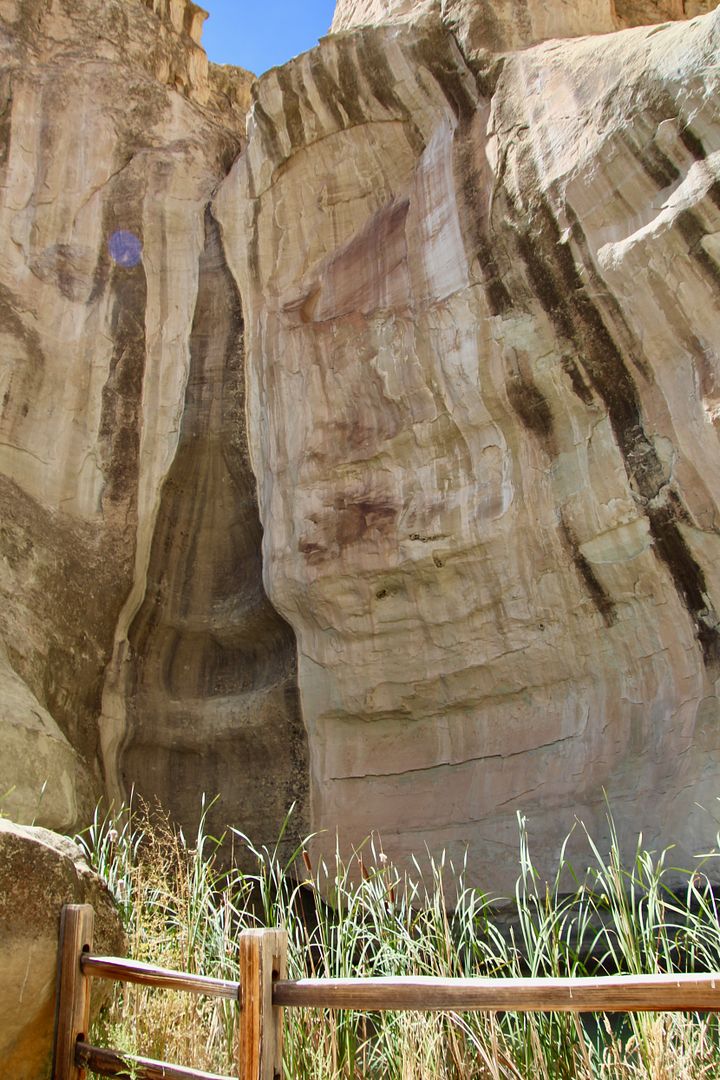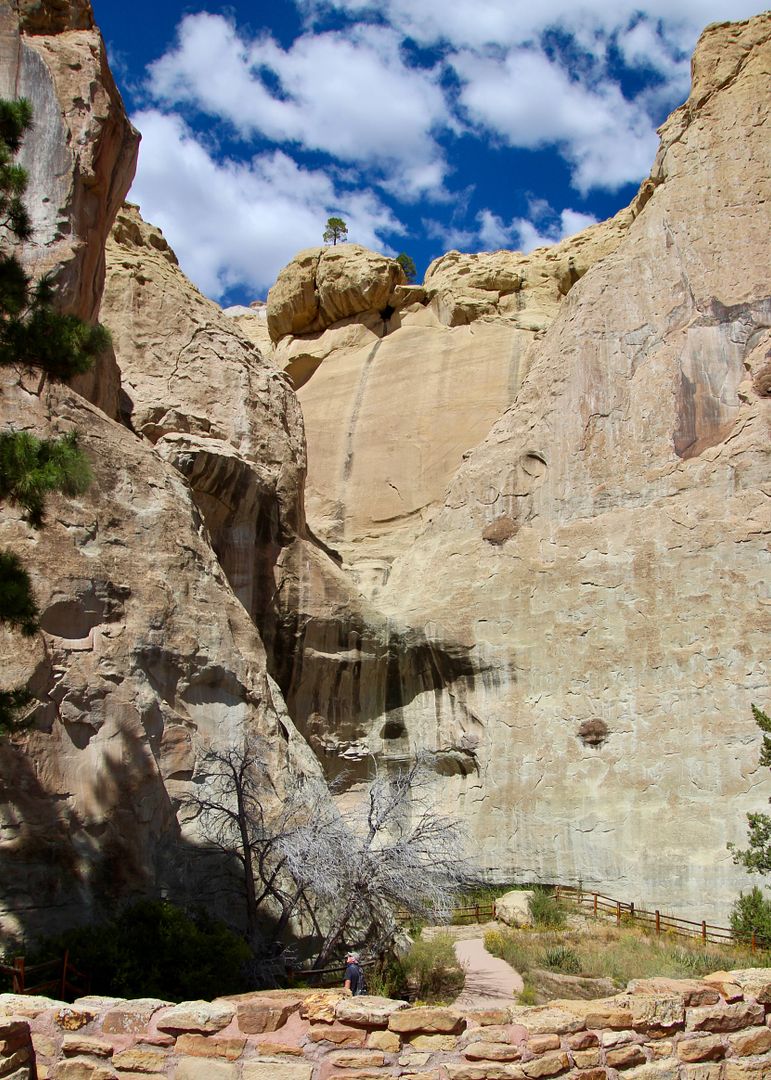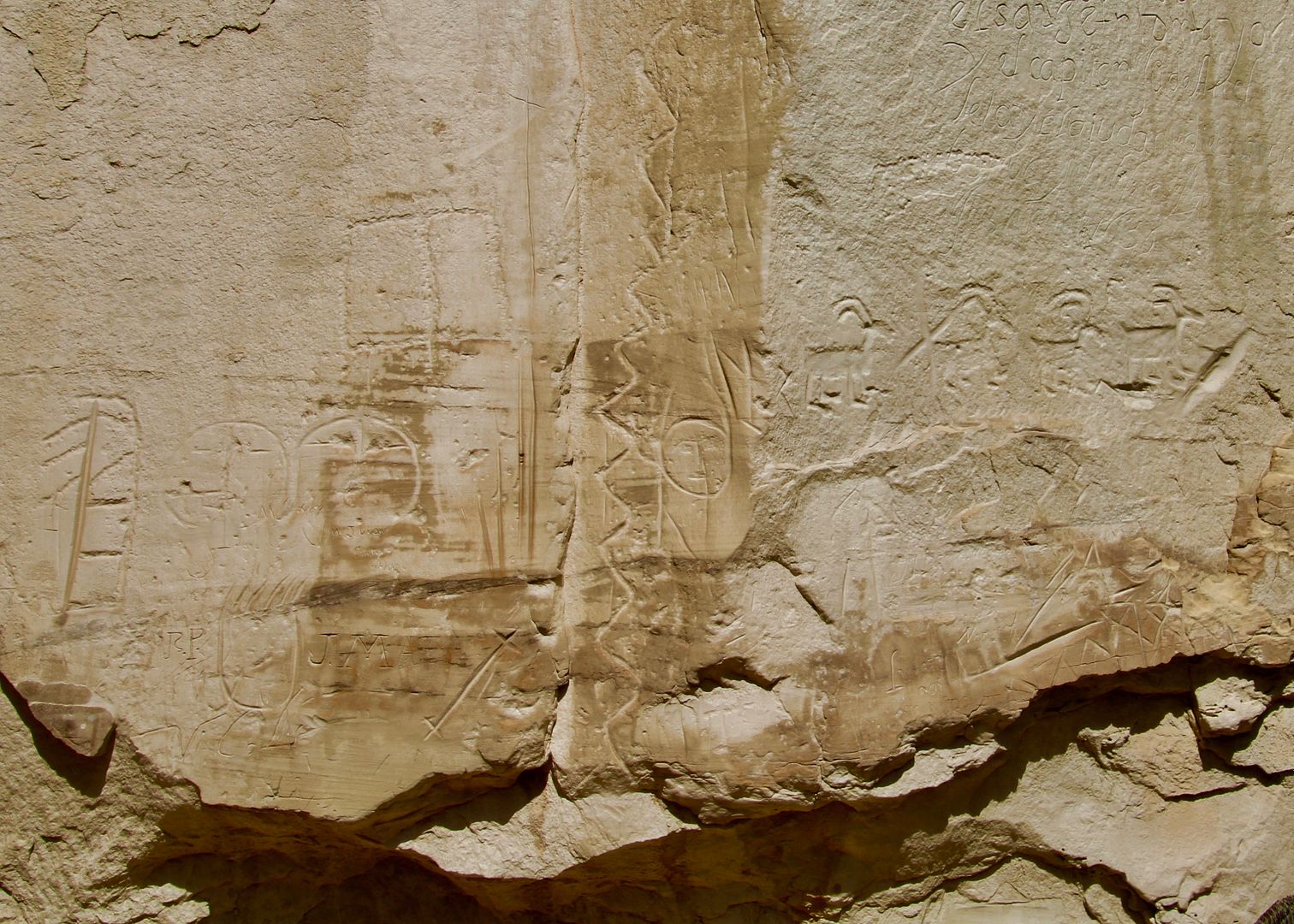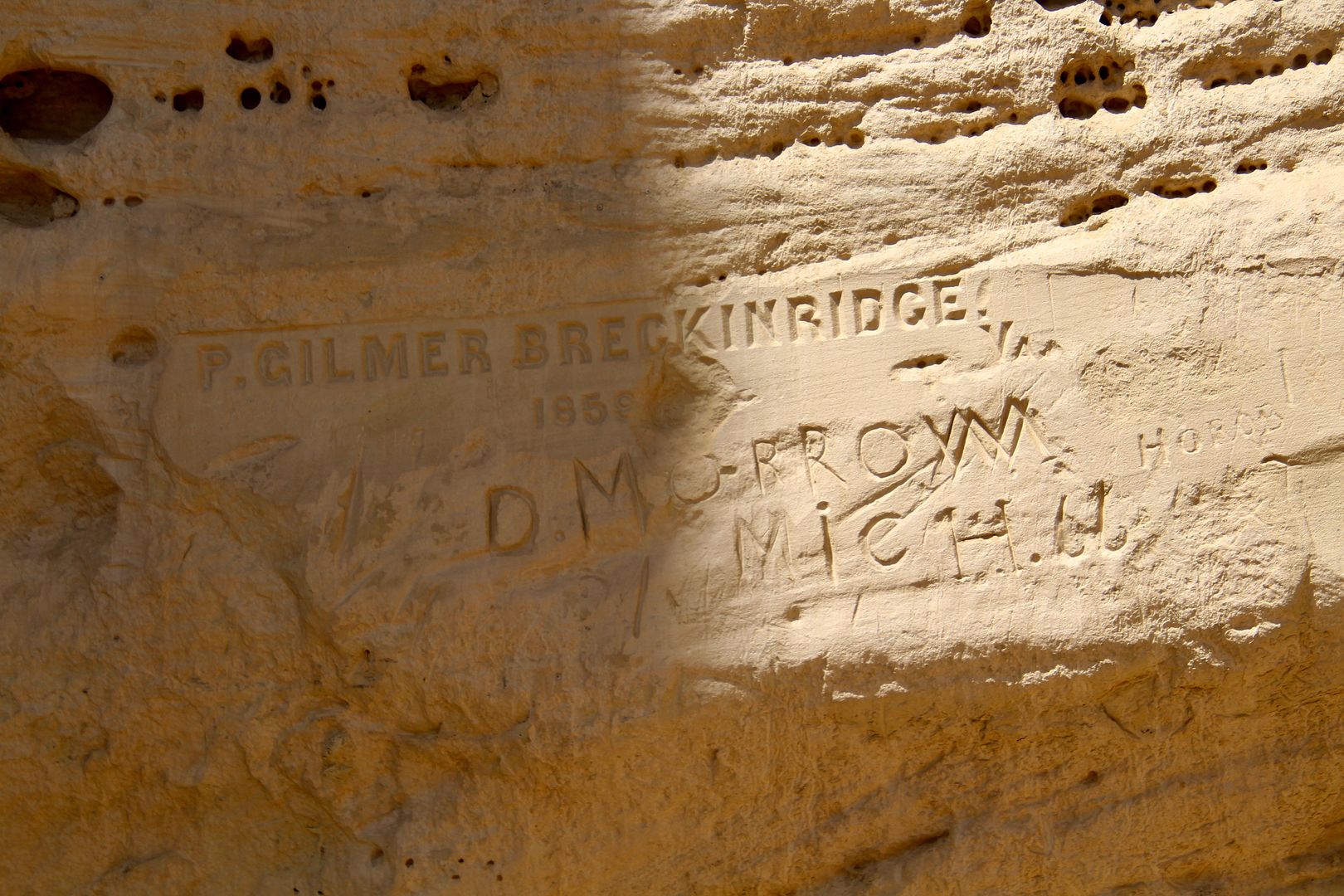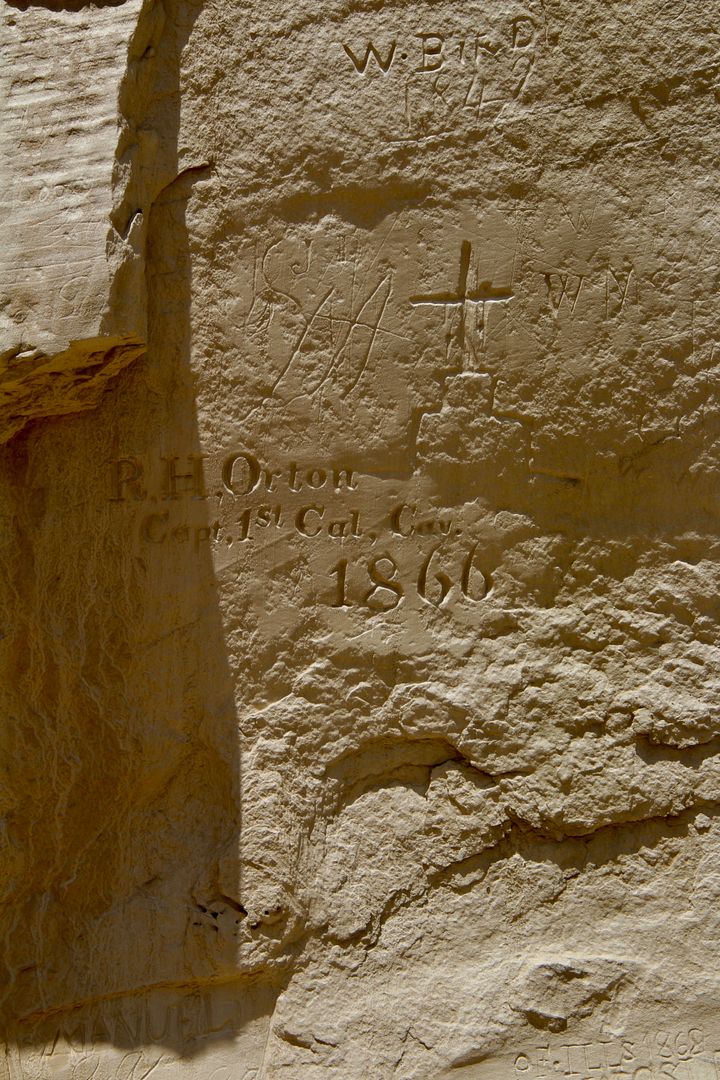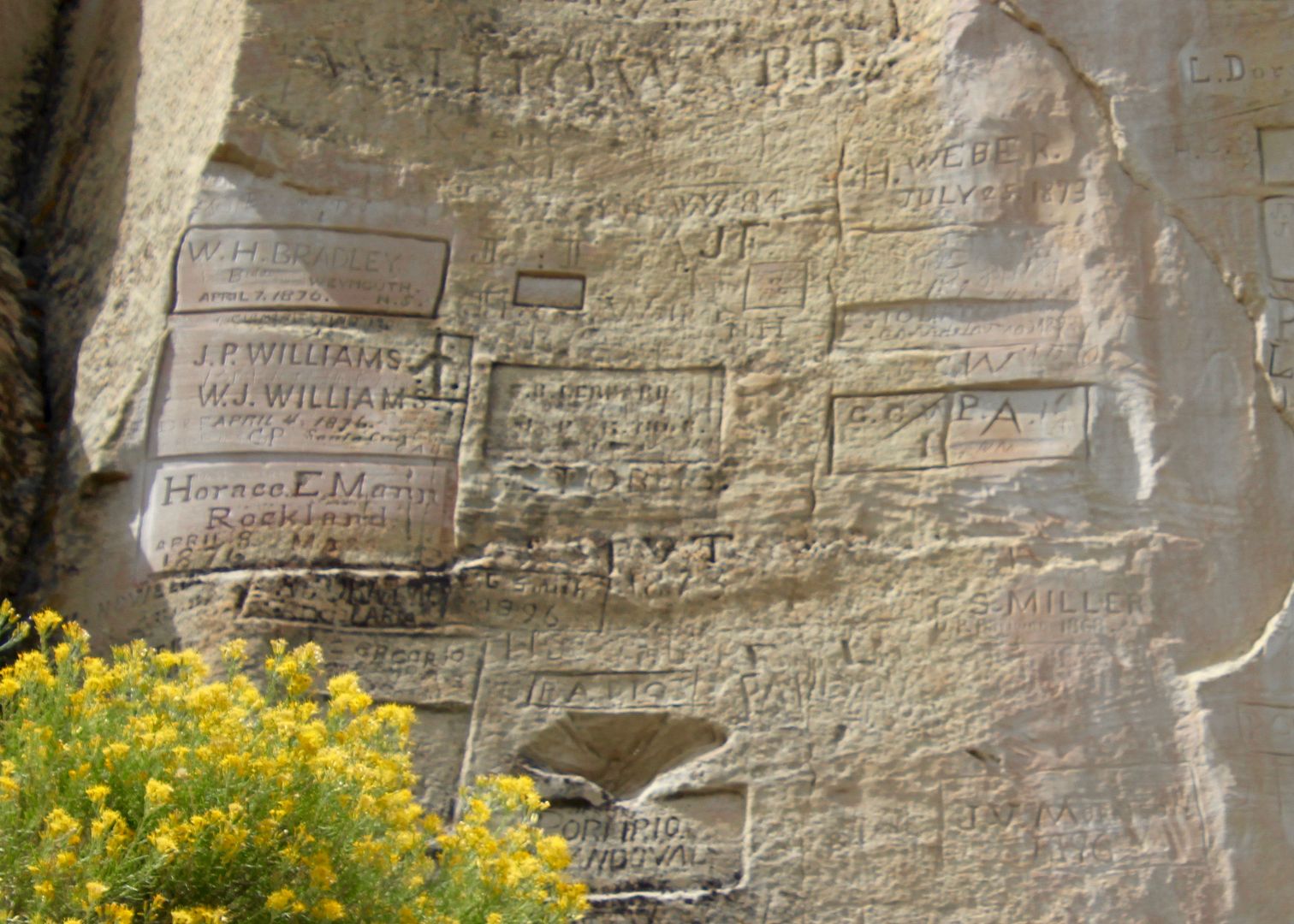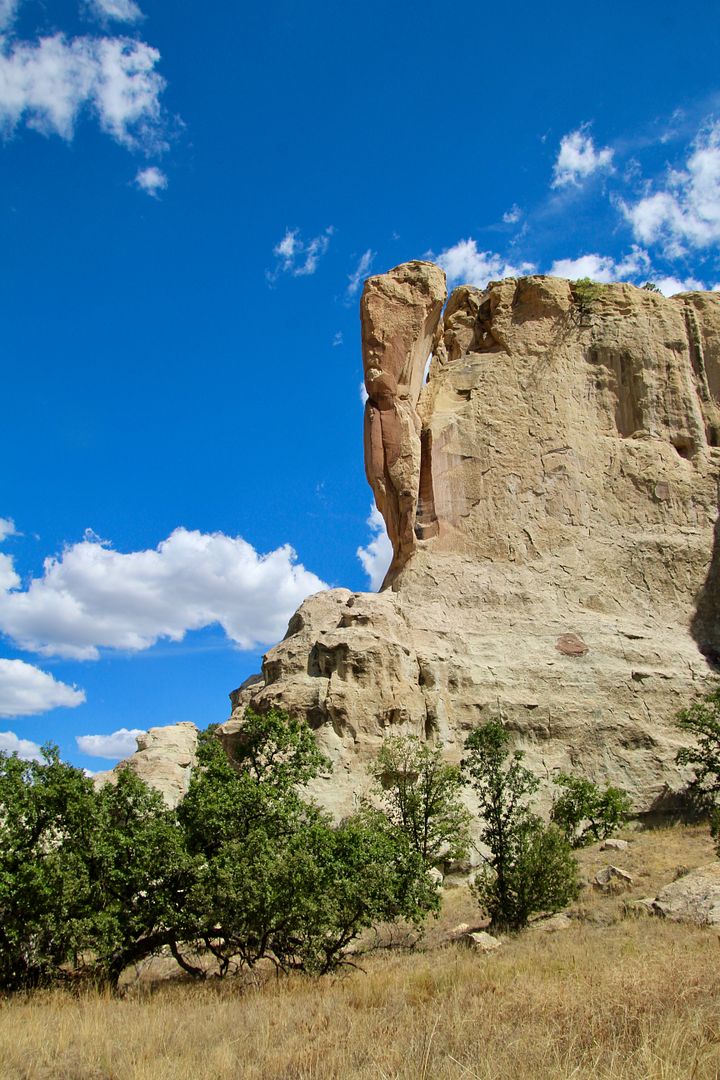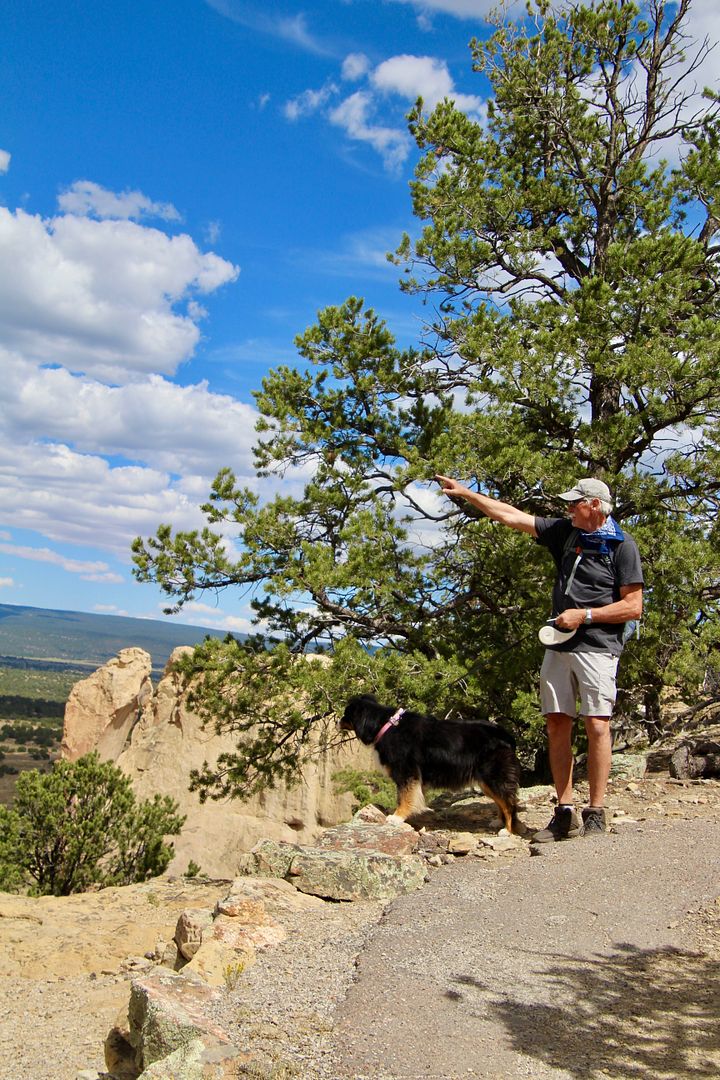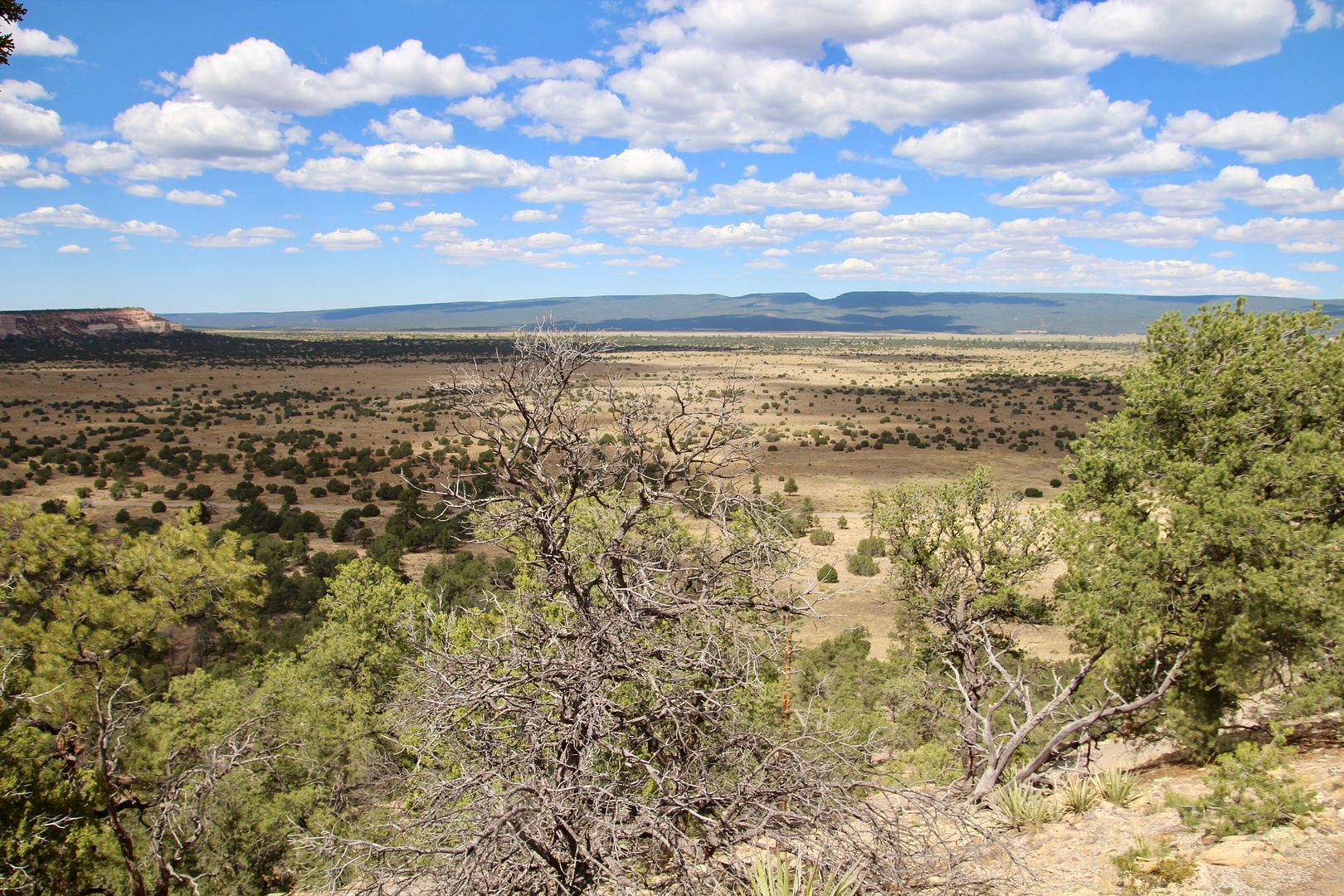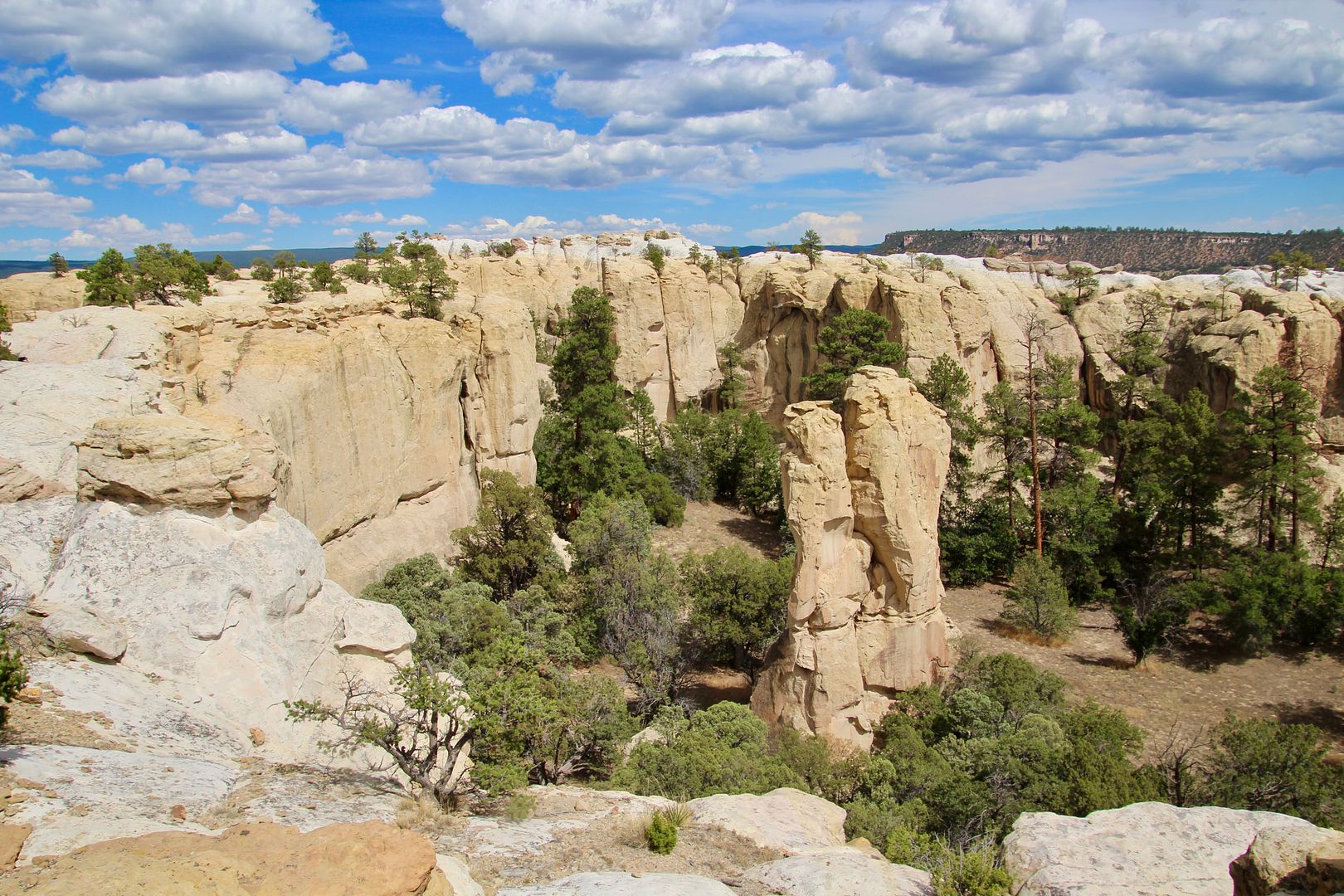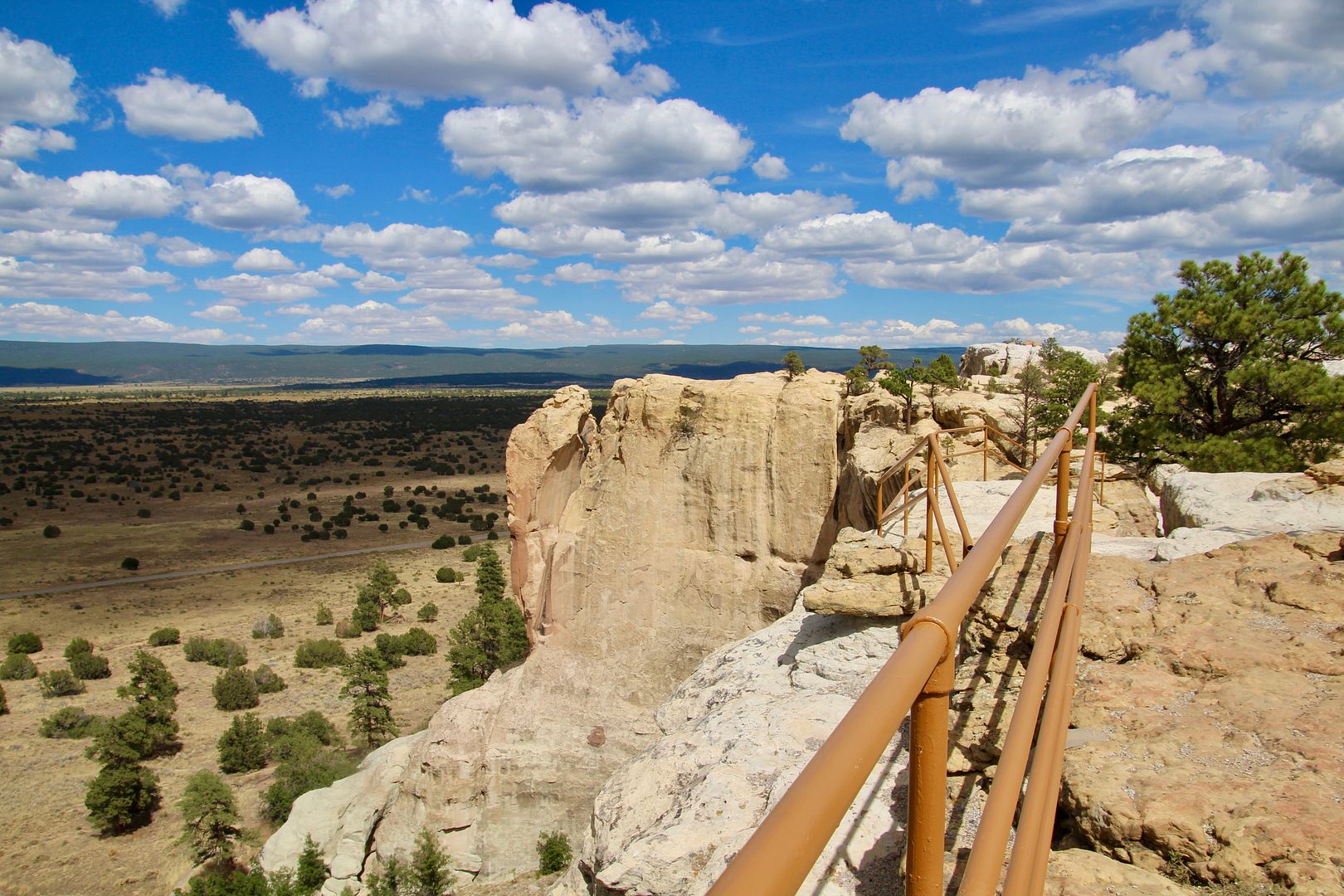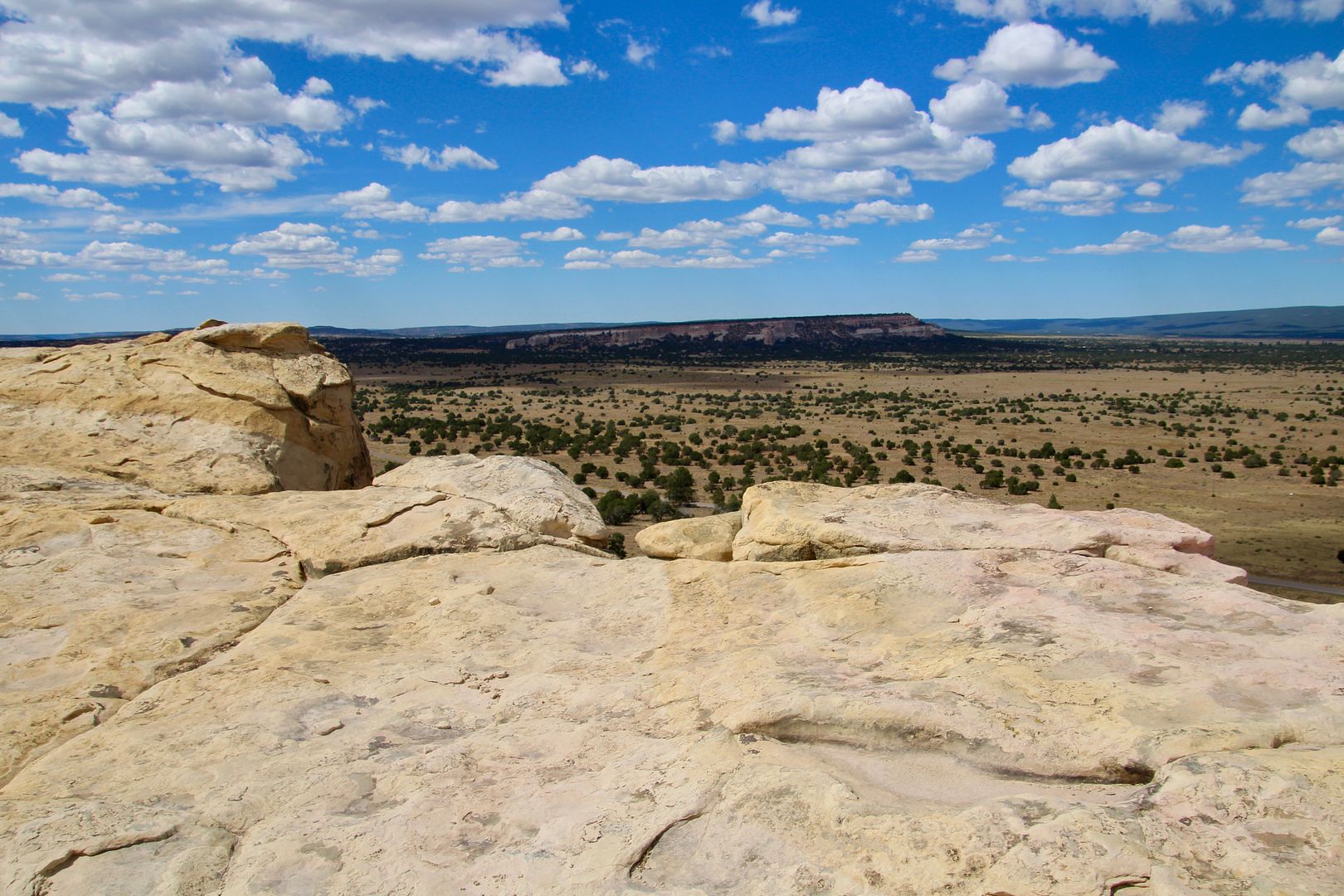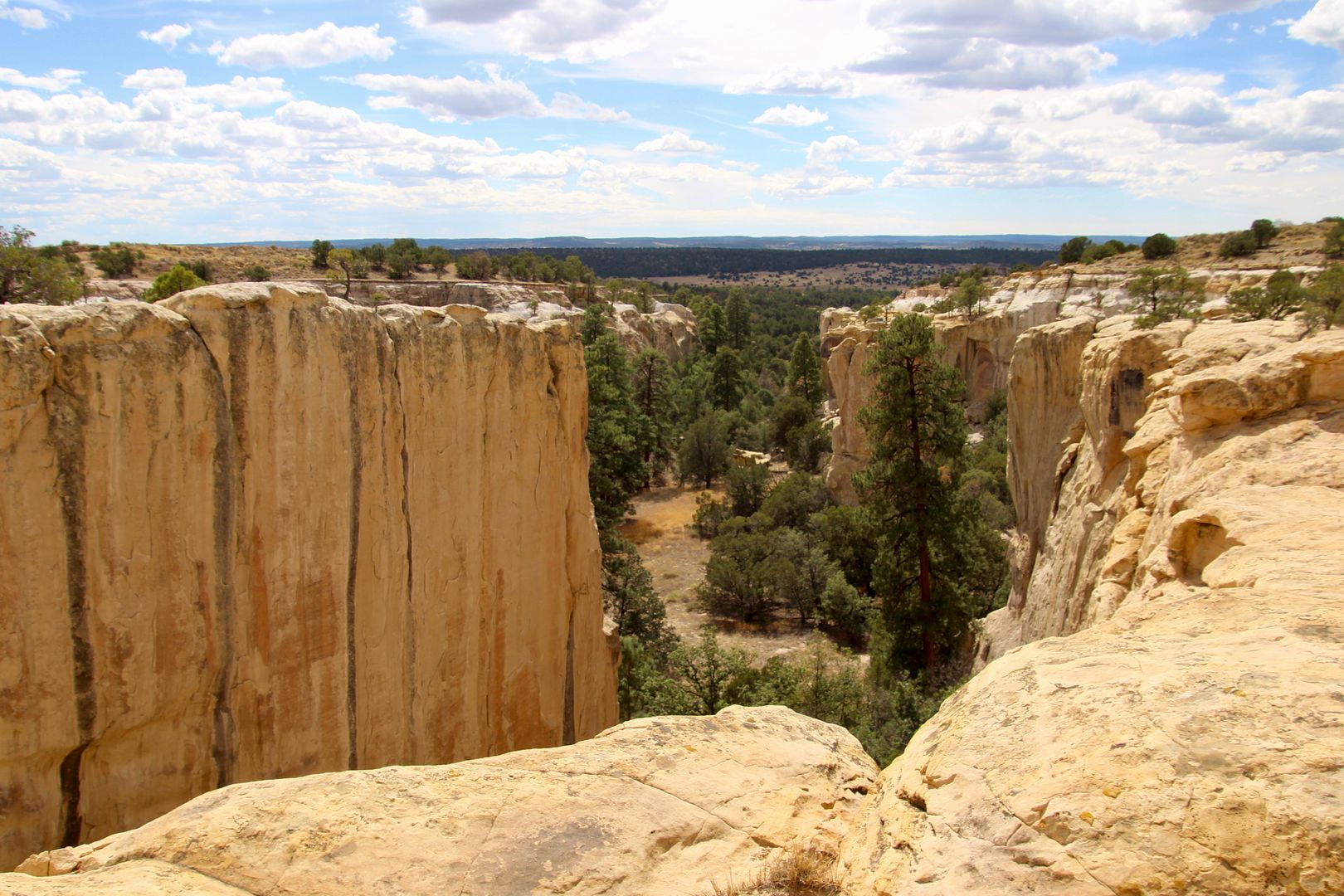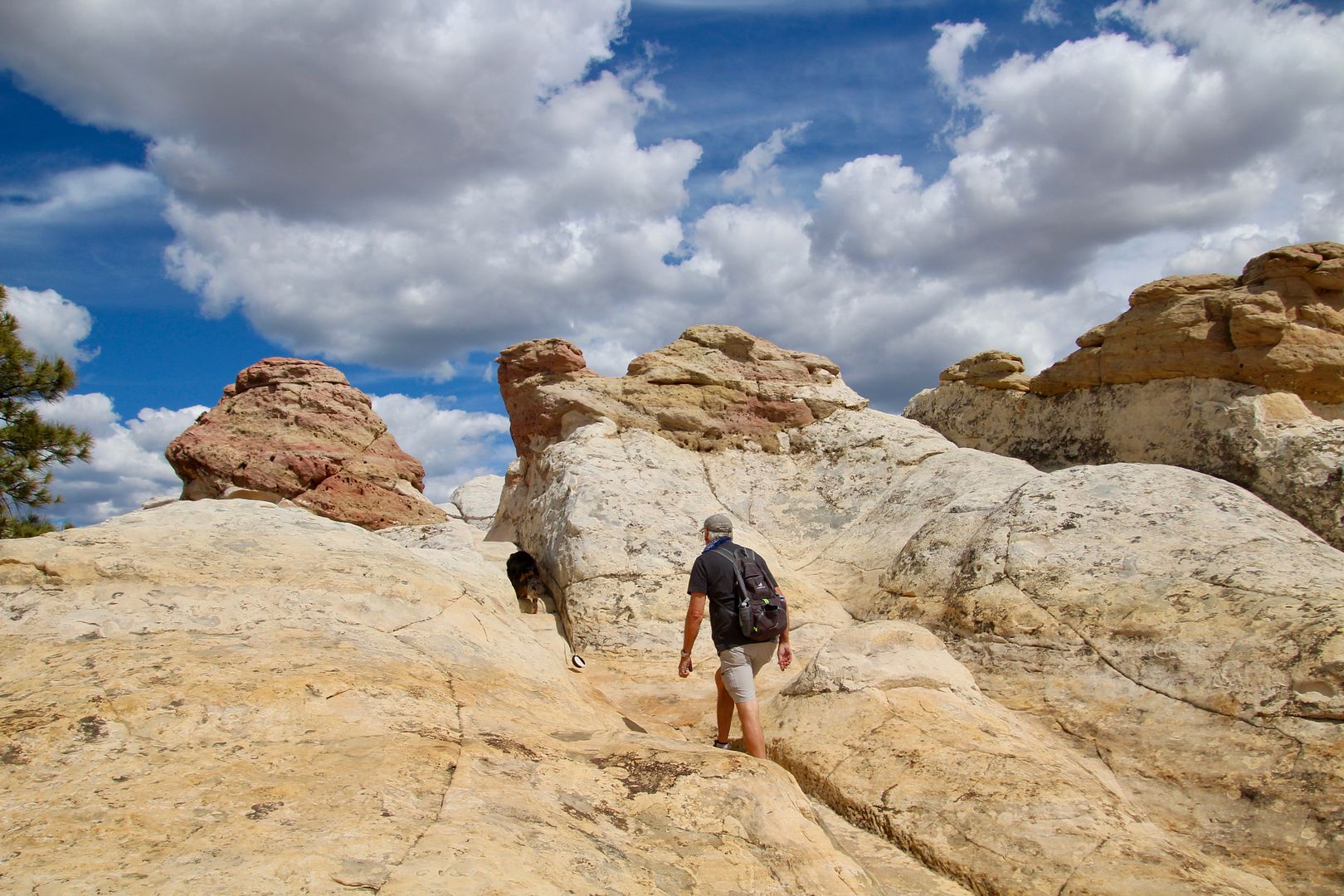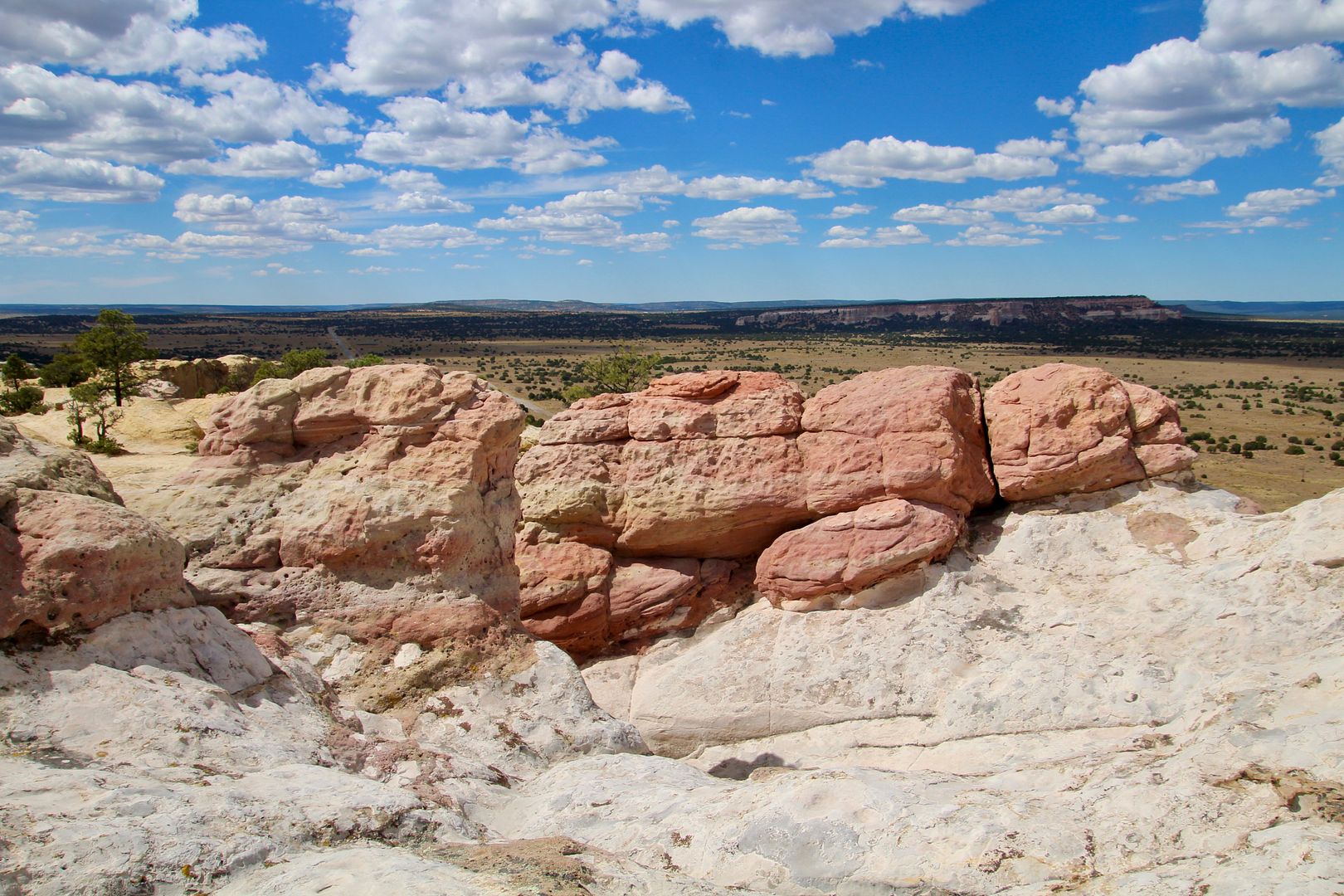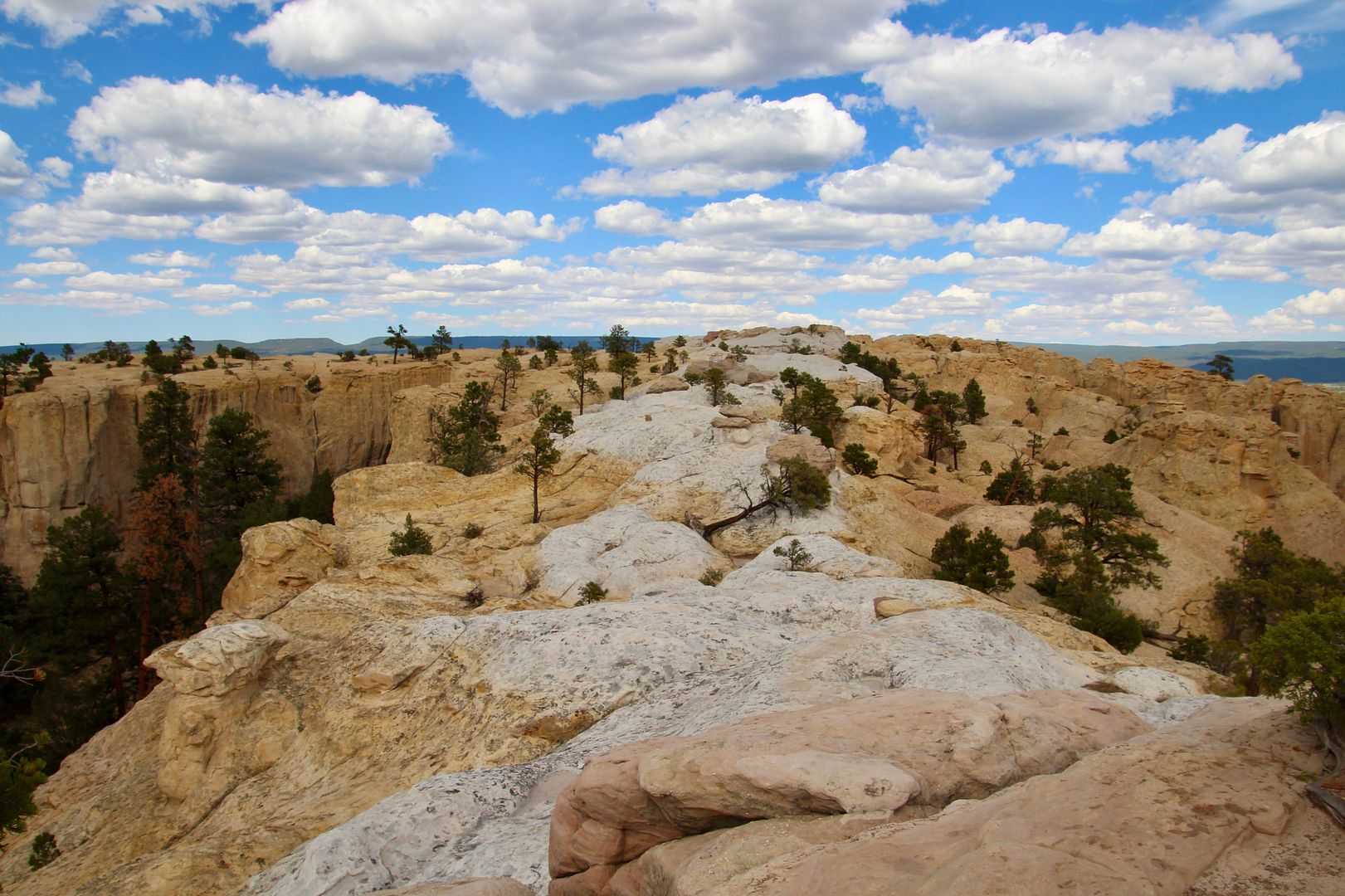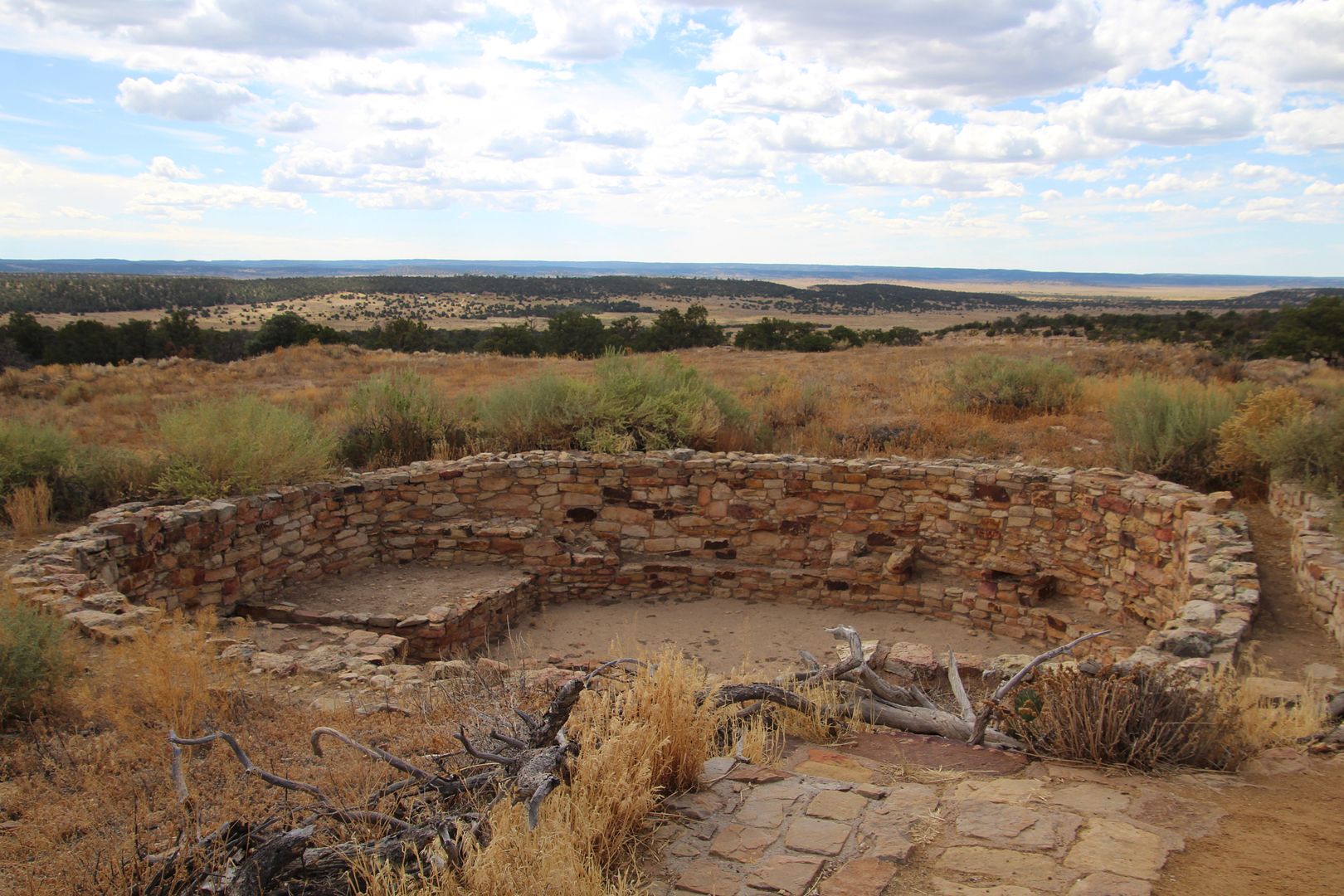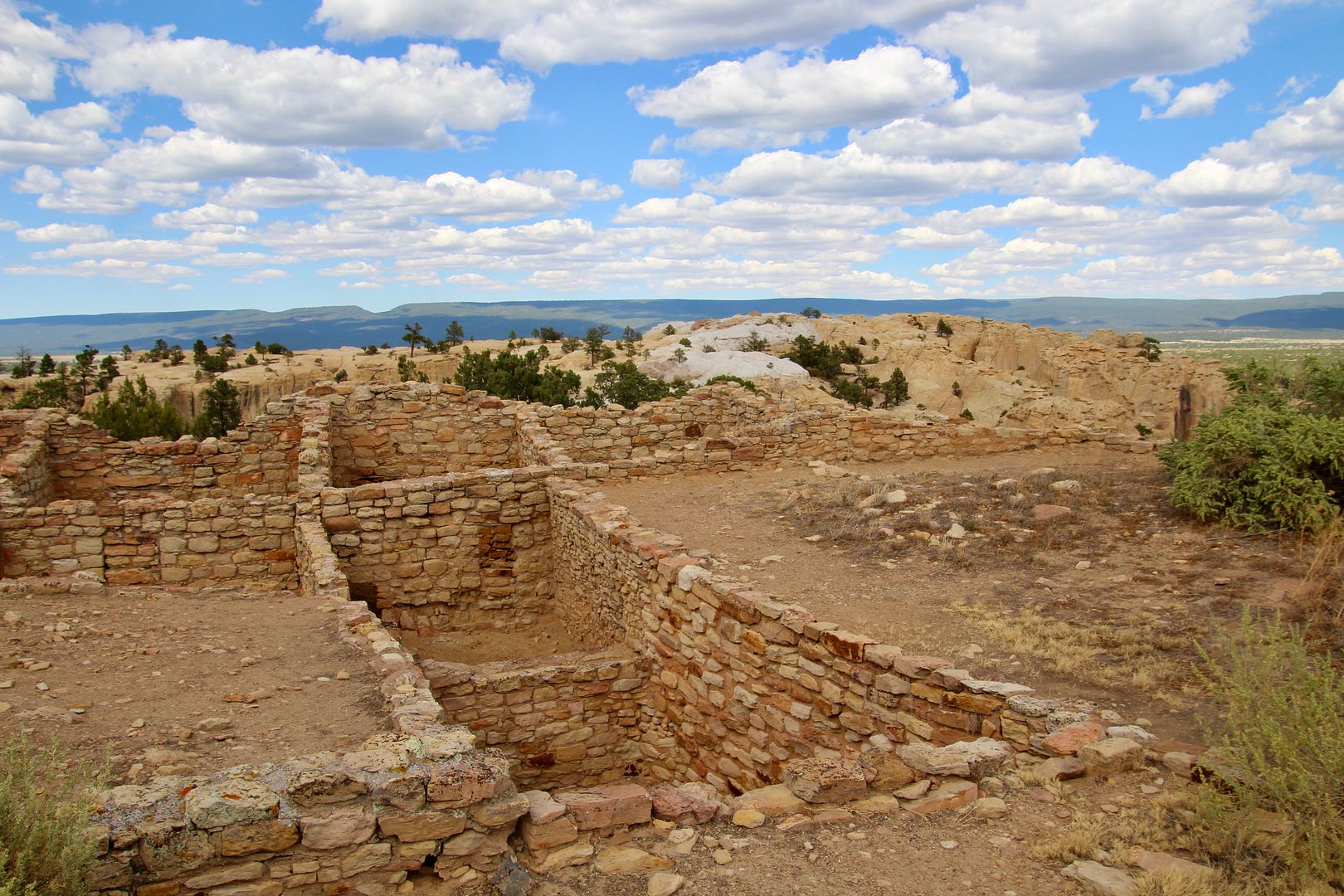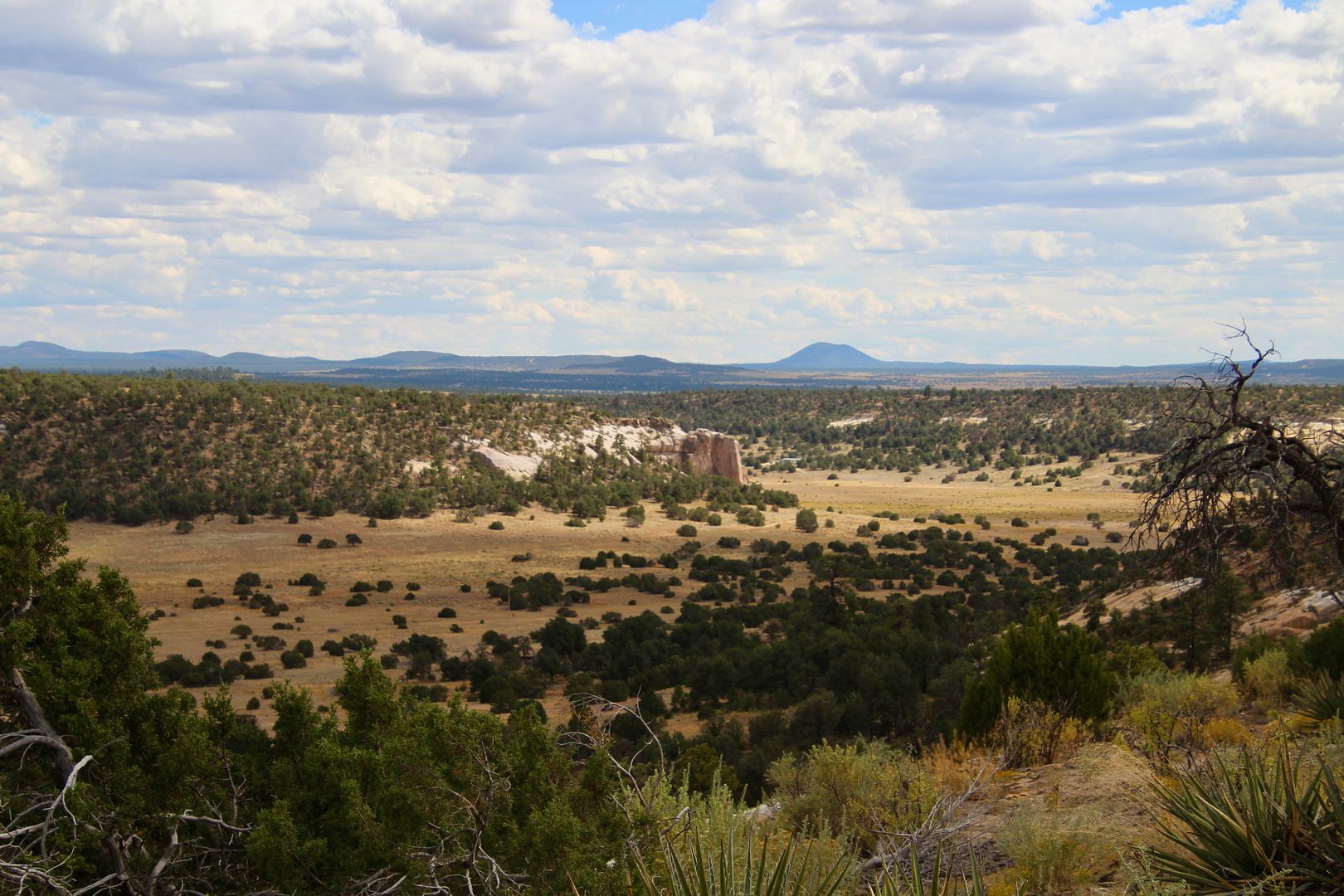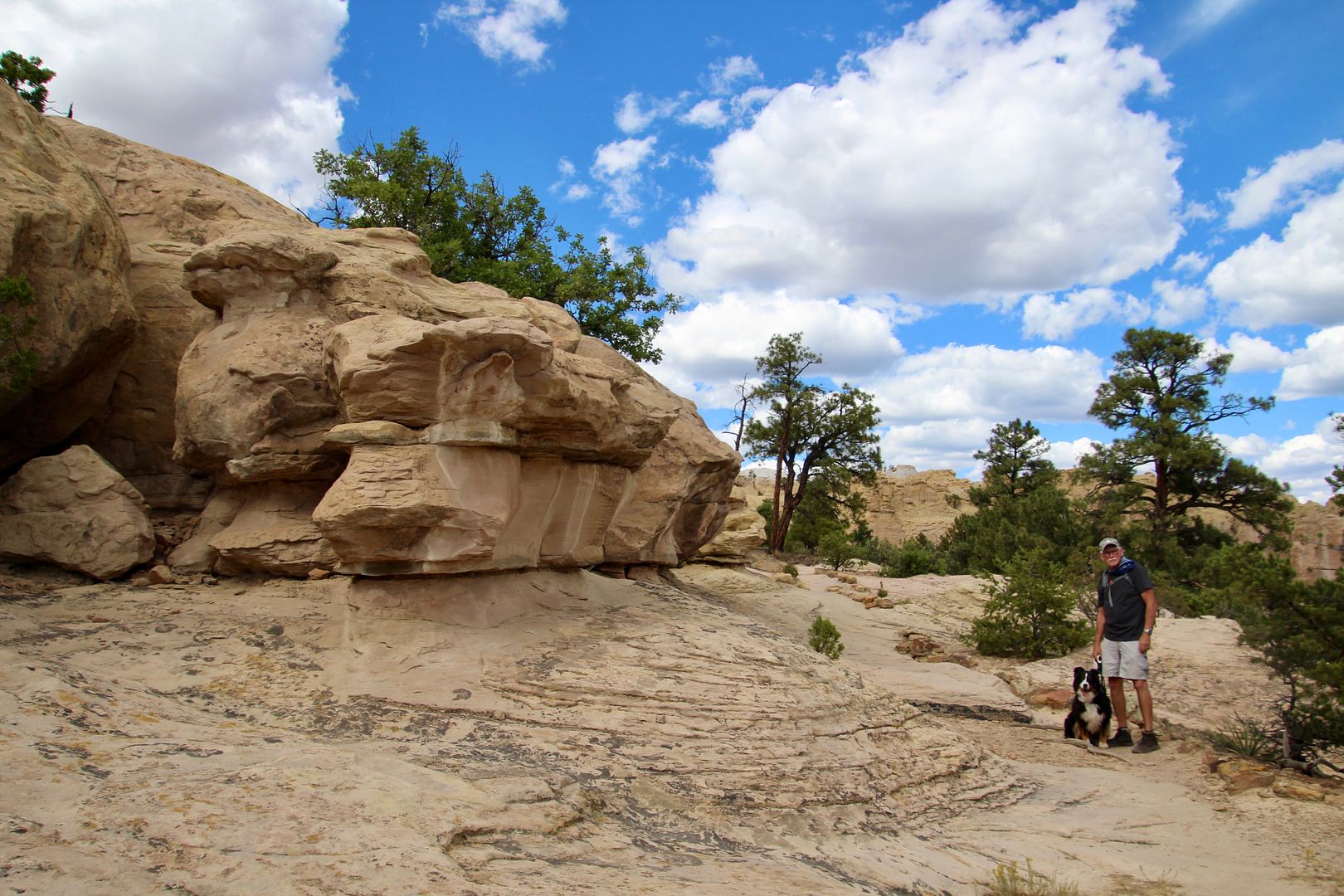A short distance from El Morro is El Malpais (Spanish for “badlands”) National Monument (about 60 miles from Gallup, NM). We chose to spend a day at each (instead of visiting both in one day). I am glad we did, because there is a lot to see in each and they are quite different.
The El Malpais Visitor Center is right off I-40 at Exit 85. It has beautiful exhibits about the cultural and geologic history of the area.
- Lava crater: steep-sided with wide mouth core
- Cinder cone: accumulated cinder ejected from a vent
- Shield volcano: created by a series of lava flows
- Composite: formed by series of eruptions over hundreds of thousands of years (Mount Taylor).
Native Americans lived in this rugged terrain for thousands of years. They were an outlier of the Chaco culture that was comprised of over 150 communities over the Four Corners region. The ancient Zuni-Acoma Trail runs through the monument and is a strenuous 7.5 miles hike over reservation four sharp lava flows. Most people moved to the east in the 1300-1400s to what is not the Acoma Indian Reservation. The Continental Divide Trail also runs through a proton of the monument.
We began our visit on the east side of the monument traveling south on Hwy 117 (exit 89 on I-40). The Sandstone Bluffs Overlook was our first stop. There are million-year-old rocks here and some of the youngest lava flows in the US. Just below these bluffs is the McCarty Lava Flow (2,000-3,000 years ago). Can you see the area of black rocks?
You can see that the sandstone bluffs extend for quite a distance. Mount Taylor, the tallest mountain in New Mexico at 11,301’, can be seen in the background. Two campgrounds and trails to the top can be found there.
Leashed pets are permitted here (which is great for our girl, Sadie). I worry about her getting too close to the edge when we are in places like this, but she just seems to know what to do (thankfully).
Continuing south on Hwy 117, we saw more sandstone bluffs until we reached our next stop, La Ventana Natural Arch.
A short, gravel trail leads to a closer view of this huge arch. You can see that this is not only an arch, but there is a large opening at the top behind it.
Retracing our route, we went north on Hwy 117 to I-40 east to Exit 81 to Hwy 53 south (it wasn’t that far) to the El Calderon Area. This is a forested area where you can get see lava flows and a cinder cone along the 3-mile (moderate) loop trail.
The first stop along the trail is Junction Cave, a lava tube created by lava flows from (nearby) El Calderon Cinder Cone. The cave is an unexpected sight in this landscape! A scientific study in 1995 found that Junction Cave had many cave-adapted species (mostly microscopic that live in deep crevices and dark corners).
Two deep pits called, Double Sinks, formed when the roofs of lava tubes collapsed. About 80’ deep, owls, squirrels, and ferns live here.
Thousands of bats fly from Bat Cave (below) at dusk. Some are migratory (Mexican free-tailed bats) and others live here year-round (Townsend’s big-eared and little brown bats) at dusk. You can see Xenolith Cave near Bat Cave.
As we approached the El Calderon Cinder Cone, we could see both black cinders and red ones. Apparently, there were two major eruptions here, each creating the unique cinders.
The trail follows the lava trench into the cone. Soil and trees now fill much of the interior cone.
Cinders (for road construction) and bat guana (for fertilizer) have been mined here, but both are now protected by the National Park Service. We continued on the trail enjoying the interesting terrain here.
This was another fascinating National Park site New Mexico. We have so much enjoyed our stay this year in the Land of Enchantment. Having lived in Pennsylvania for most of my life, I find these places to be very unique...and interesting.
For additional information about El Malpais National Monumet, go to www.nps.gov/elma.
